inbox and environment news: Issue 549
August 7 - 13, 2022: Issue 549
Newport Coastal Erosion
Why Trees?
Magpie Breeding Season: Avoid The Swoop!
- Try to avoid the area. Do not go back after being swooped. Australian magpies are very intelligent and have a great memory. They will target the same people if you persist on entering their nesting area.
- Be aware of where the bird is. Most will usually swoop from behind. They are much less likely to target you if they think they are being watched. Try drawing eyes on the back of a helmet or hat. You can also hold a long stick in the air to deter swooping.
- Keep calm and do not panic. Walk away quickly but do not run. Running seems to make birds swoop more. Be careful to keep a look out for swooping birds and if you are really concerned, place your folded arms above your head to protect your head and eyes.
- If you are on your bicycle or horse, dismount. Bicycles can irritate the birds and the major cause of accidents following an encounter with a swooping bird, is falling from a bicycle. Calmly walk your bike/horse out of the nesting territory.
- Never harass or provoke nesting birds. A harassed bird will distrust you and as they have a great memory this will ultimately make you a bigger target in future. Do not throw anything at a bird or nest, and never climb a tree and try to remove eggs or chicks.
- Teach children what to do. It is important that children understand and respect native birds. Educating them about the birds and what they can do to avoid being swooped will help them keep calm if they are targeted. Its important children learn to protect their face.
Wanted: Photos Of Flies Feeding On Frogs (For Frog Conservation)


Possums In Your Roof?: Do The Right Thing

Local Wildlife Rescuers And Carers State That Ongoing Heavy Rains Are Tough For Us But Can Be Tougher For Our Wildlife:
- Birds and possums can be washed out of trees, or the tree comes down, nests can disintegrate or hollows fill with water
- Ground dwelling animals can be flooded out of their burrows or hiding places and they need to seek higher ground
- They are at risk crossing roads as people can't see them and sudden braking causes accidents
- The food may disappear - insects, seeds and pollens are washed away, nectar is diluted and animals can be starving
- They are vulnerable in open areas to predators, including our pets
- They can't dry out and may get hypothermia or pneumonia
- Animals may seek shelter in your home or garage.
You can help by:
- Keeping your pets indoors
- Assessing for wounds or parasites
- Putting out towels or shelters like boxes to provide a place to hide
- Drive to conditions and call a rescue group if you see an animal hit (or do a pouch check or get to a vet if you can stop)
- If you are concerned take a photo and talk to a rescue group or wildlife carer
There are 2 rescue groups in the Northern Beaches:
Sydney Wildlife: 9413 4300
WIRES: 1300 094 737
Please be patient as there could be a few enquiries regarding the wildlife.
Generally Sydney Wildlife do not recommend offering food but it may help in some cases. Please ensure you know what they generally eat and any offerings will not make them sick. You can read more on feeding wildlife here
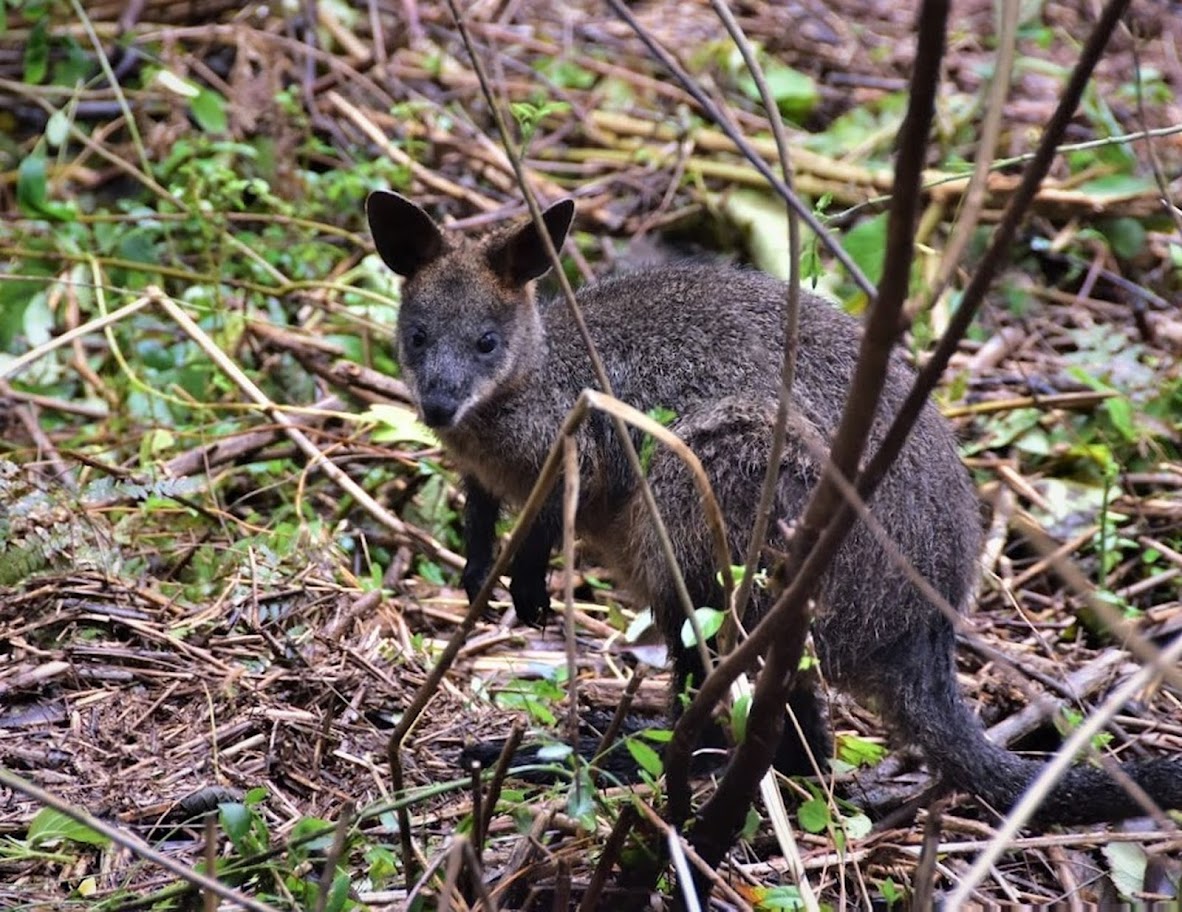
Information courtesy Ed Laginestra, Sydney Wildlife volunteer. Photo: Warriewood Wetlands Wallaby by Kevin Murray, March 2022.
Aviaries + Possum Release Sites Needed

Sydney Wildlife Rescue: Helpers Needed

Bushcare In Pittwater
Where we work Which day What time
Avalon
Angophora Reserve 3rd Sunday 8:30 - 11:30am
Avalon Dunes 1st Sunday 8:30 - 11:30am
Avalon Golf Course 2nd Wednesday 3 - 5:30pm
Careel Creek 4th Saturday 8:30 - 11:30am
Toongari Reserve 3rd Saturday 9 - 12noon (8 - 11am in summer)
Bangalley Headland 2nd Sunday 9 to 12noon
Bayview
Winnererremy Bay 4th Sunday 9 to 12noon
Bilgola
North Bilgola Beach 3rd Monday 9 - 12noon
Algona Reserve 1st Saturday 9 - 12noon
Plateau Park 1st Friday 8:30 - 11:30am
Church Point
Browns Bay Reserve 1st Tuesday 9 - 12noon
McCarrs Creek Reserve Contact Bushcare Officer To be confirmed
Clareville
Old Wharf Reserve 3rd Saturday 8 - 11am
Elanora
Kundibah Reserve 4th Sunday 8:30 - 11:30am
 Mona Vale
Mona Vale Mona Vale Beach Basin 1st Saturday 8 - 11am
Mona Vale Dunes 2nd Saturday +3rd Thursday 8:30 - 11:30am
Newport
Bungan Beach 4th Sunday 9 - 12noon
Crescent Reserve 3rd Sunday 9 - 12noon
North Newport Beach 4th Saturday 8:30 - 11:30am
Porter Reserve 2nd Saturday 8 - 11am
North Narrabeen
Irrawong Reserve 2nd Saturday 2 - 5pm
Palm Beach
North Palm Beach Dunes 3rd Saturday 9 - 12noon
Scotland Island
Catherine Park 2nd Sunday 10 - 12:30pm
Elizabeth Park 1st Saturday 9 - 12noon
Pathilda Reserve 3rd Saturday 9 - 12noon
Warriewood
Warriewood Wetlands 1st Sunday 8:30 - 11:30am
Whale Beach
Norma Park 1st Friday 9 - 12noon
Western Foreshores
Coopers Point, Elvina Bay 2nd Sunday 10 - 1pm
Rocky Point, Elvina Bay 1st Monday 9 - 12noon
Gardens And Environment Groups And Organisations In Pittwater
Release Of Second Water For The Environment Special Account (WESA) Report
“It is not possible to reach the 450 GL target through the current efficiency measures program – the Off Farm Efficiency Program – even if the WESA’s time and budget limits were removed.”“Putting aside program and timing limitations, the estimated cost to recover the full 450GL through [only] efficiency measures is between $3.4 billion and $10.8 billion.”''Only 2.6 GL has been recovered or contracted to be recovered through previous efficiency measures programs.''
20,000 People Force NSW Parliament To Debate Ending Native Forest Logging
- Develop a plan to transition the native forestry industry to 100% sustainable plantations by 2024.
- In the interim, place a moratorium on public native forest logging until the regulatory framework reflects the recommendations of the leaked NRC report.
- Immediately protect high-conservation value forests through gazettal in the National Parks estate.
- Ban use of native forest materials as biomass fuel.
Government Gives Away Billions Of Litres Of Water At The Stroke Of A Pen
Water Sharing Plans: Farmers And Water Users
- by 1 September, licence holders in the Border Rivers and Gwydir valleys will have their water accounts credited and the floodplain harvesting framework will be fully operational
- licences for the Macquarie, Barwon-Darling and Namoi valleys will be determined and will come into effect later this year and in early 2023.
Communities Central To Improving Murray-Darling Basin Health
- Trialling environmental DNA technology that can tell us what fish, frogs and other animals have been active in the water, even if they’re not currently present – working with local citizens to collect water samples. This helps to track changes in biodiversity over time.
- Collecting oral histories that will capture the changes in the Basin experienced by long-term community members over time, ensuring their experiences are incorporated into future plans.
- Working with several First Nations groups to identify cultural flow requirements in the Basin.
- Building a better understanding of the economic contribution of a variety of industries including tourism & recreation and floodplain grazing.
Unlocking The Power Of Offshore Wind
- The Pacific Ocean region off the Hunter in NSW
- The Pacific Ocean region off the Illawarra in NSW
- The Southern Ocean region off Portland in Victoria
- The Bass Strait region off Northern Tasmania
- The Indian Ocean region off Perth/Bunbury, WA.
Call Out To Improve Coastal Design
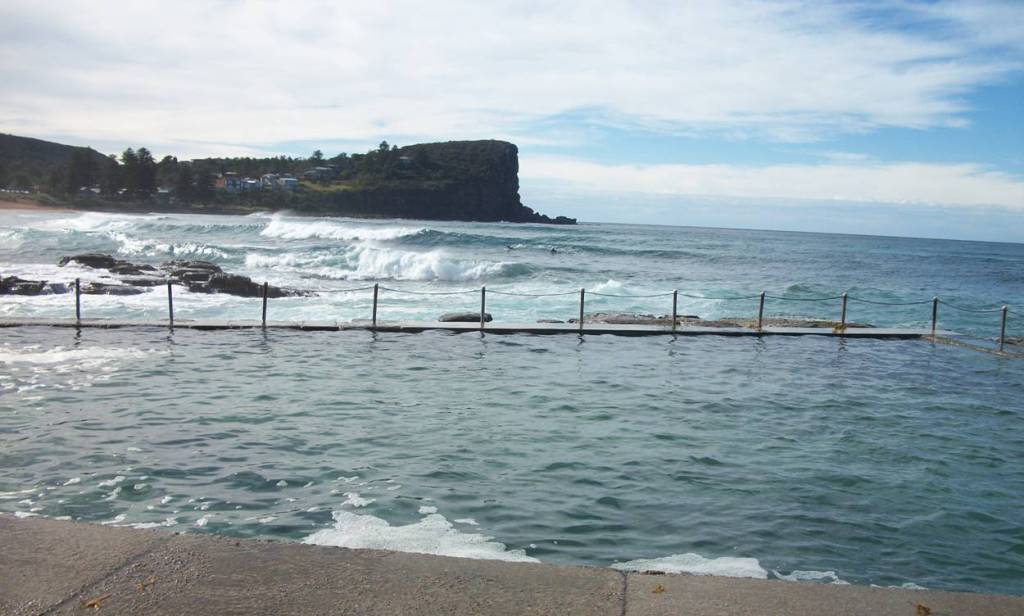
Government set to legislate its 43% emissions reduction target after Greens announce support
Michelle Grattan, University of CanberraThe government is now assured it will secure its legislation to enshrine its 43% 2030 emissions reduction target, after Greens leader Adam Bandt pledged his party would support it in both houses.
The government has the numbers on its own in the House of Representatives. In the Senate, it only needs one more vote, apart from the Greens. It expects the vote of ACT crossbencher David Pocock. The bill will be voted on in the lower house this week and will go to the Senate next month.
Bandt’s announcement follows long negotiations with the government which, however, refused to budge on the minor party’s demand for a ban on new coal and gas mines.
The Greens’ decision came after it took two party room meetings to reach their position. Bandt said it was a “consensus” decision.
The government doesn’t require legislation to implement its policy, but has been anxious to put the target into law to send a strong signal including to prospective investors.
Prime Minister Anthony Albanese said after Bandt’s announcement that while the legislation wasn’t necessary, it “locks in” progress.
The Australian Chamber of Commerce and Industry said the announcement “is in Australia’s national interest and will provide certainty for business”.
The opposition formally decided this week to vote against the legislation.
Bandt told the National Press Club that Labor’s refusal to stop new mines was “ultimately untenable”.
He said Labor might not get a United Nations climate summit, which it will be seeking, if it was willing to allow new projects.
“We will pull every lever at our disposal,” to make a ban happen, he said.
“Labor is set to undo parliament’s work by opening new coal and gas projects, unless we stop them,” Bandt said.
“Over the next six to 12 months the battle will be fought on a number of fronts. We will comb the entire budget for any public money, any subsidies, hand outs or concessions going to coal and gas corporations and amend the budget to remove them.
"We will push to ensure the safeguard mechanism safeguards our future by stopping new coal and gas projects. We will push for a climate trigger in our environment laws.
"We will continue to fight individual projects around the country, like Beetaloo, Scarborough and Barossa. I call on all Australians to join this battle. This battle to save our country, our communities and indeed our whole civilisation from the climate and environment crisis.”
Meanwhile, one of the Liberal moderates, Warren Entsch, has given strong support to the Coalition decision to inquire into nuclear power as a potential policy. Entsch told Sky that as coal went out of the system, we had to have “something to back up” renewable alternatives.
Territories Legislation Sails Through Lower House
Legislation to allow the ACT and the Northern Territory to make laws on voluntary assisted dying has passed the House of Representatives by 99 to 37.
MPs on both sides had a conscience vote. Leader of the House Tony Burke was among several Labor members to vote against the bill, which overturns a 1997 ban on the territories legislating for euthanasia. Liberal leader Peter Dutton and Nationals leader David Littleproud were both yes votes.
The bill will go to the Senate next month, where it is expected to pass.
UPDATE On Climate Bill – Liberal To Cross Floor
Tasmanian Liberal Bridget Archer told parliament late Wednesday that she will cross the floor and vote for Labor’s climate bill.
“At the end of the day, it’s important to me that when I am back in my own community, I am able to sincerely say that I used the opportunity afforded to me with the power of my vote, to stand up for what they want and need and to move on from this debate.”
She said she had had constructive discussions with Peter Dutton “about my views and that of the party on this issue.
"While there is much we do agree on, he understands why I have made this decision.
"I have respect for him and he has my support as our party formulates our own plan to combat climate change while supporting the Australian economy.
"However, while that happens, it is important that we do move forward and act now and not delay until the eve of the next election.”![]()
Michelle Grattan, Professorial Fellow, University of Canberra
This article is republished from The Conversation under a Creative Commons license. Read the original article.
It’s official: the Murray-Darling Basin Plan hasn’t met its promise to our precious rivers. So where to now?
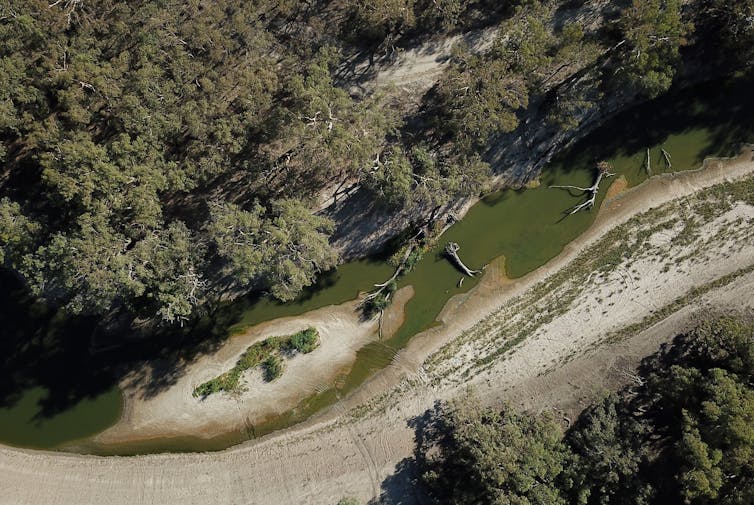
A long-awaited report released on Tuesday found the amount of water promised to river environments under the Murray-Darling Basin Plan “cannot be achieved” under current settings. In short, the plan is failing on a key target.
The water is essential to protecting plants, animals and ecosystems along Australia’s most important river system.
One part of the plan stipulates that by 2024, 450 billion litres of water – a small proportion of the overall target – should be recovered and returned to rivers, wetlands and groundwater systems. This should be achieved through water efficiency programs funded by the Commonwealth.
But just two years out from the deadline, only 2.6 billion litres, or about 0.5% of this water, has actually been delivered. The findings have reignited debate about the Murray-Darling Basin – a running sore for which treatments abound, but seemingly no cure exists.
Before the May election, Prime Minister Anthony Albanese pledged to deliver the Murray-Darling Basin Plan. But yesterday’s report, prepared by independent experts, casts serious doubt on whether that promise can be kept. The basin’s focus on a sustainable future is still a way off, and only political will can fix it.

What’s This All About?
You could be forgiven for not having read Tuesday’s report, which bore the repellent title “Second review of the Water for the Environment Special Account”. It reflects the arcane and impenetrable jargon surrounding water management in the basin which hinders public understanding of this crucial policy area.
The plan involves “water recovery targets” to be met by “efficiency and constraints measures”. But what does that all mean?
Irrigators and other water users extract water from the rivers, streams and aquifers of the Murray-Darling Basin. Over the years, too much water has been extracted, which has left the basin in poor condition.
The A$13 billion Murray-Darling Basin Plan was meant to address this problem. Passed into law in 2012 under the Gillard Labor government, it promised to deliver 3,200 billion litres of water to the environment each year, by buying back water allocated to extractors and retaining it in the river system.
The goal comprised two targets for water to be delivered to the environment each year: 2,750 billion litres as soon as possible, and an additional 450 billion litres later, if it did not cause significant socio-economic impact. To do the latter, the federal government established a $1.8 billion Commonwealth fund to invest in water efficiency projects that would deliver water back to the environment.
Complicating matters, irrigators and others were opposed to water buybacks. In 2015, the Coalition government put a stop to the practice, despite its proven cost-effectiveness compared to alternatives such as subsidising dams and channels under efficiency programs.
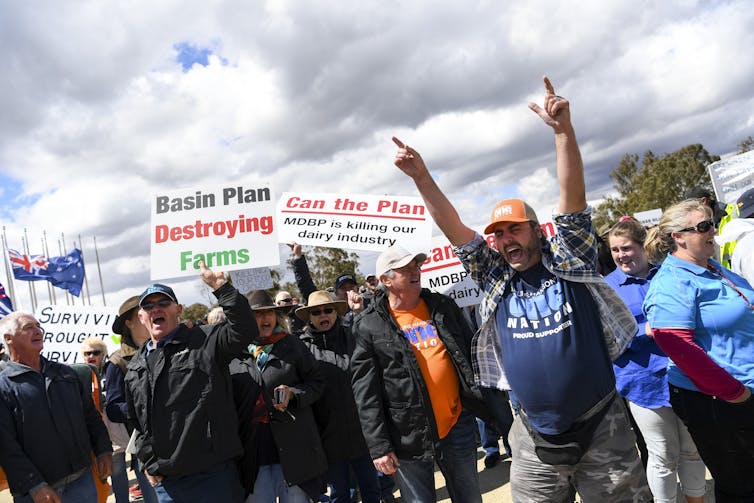
Water savings were to come from measures such as improving water efficiency on farms, and funding irrigators to reduce evaporation from dams by building them deeper.
But engineering does not easily replace ecological complexity shaped over millennia. Making water move more quickly down a river produces casualties: the creeks and wetlands and groundwater systems that rely on it.
Major efficiency projects have been exposed as inadequte. They predominantly just move environmental water from one part of the basin to the other, at significant public cost.
So what’s the upshot of all this? According to Tuesday’s report, under current efficiency measures only 60 billion litres of water can be returned to the basin environment by 2024. What’s more, the original target of 2,750 billion litres has not yet been achieved.
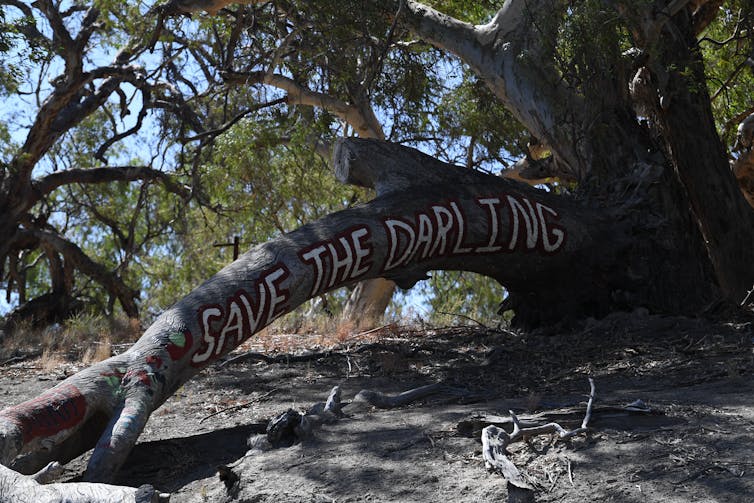
Our Rivers Remain In Trouble
After all this effort and debate, the health of the Murray-Darling Basin continues to degrade.
The State of the Environment report released this month found water extraction and drought left water levels at record lows in 2019. Rivers and catchments are mostly in poor condition, and native fish populations fell by more than 90% in the past 150 years.
Who could forget the disaster of late 2018 and early 2019, when millions of fish died at Menindee Lakes? That disaster was associated with low river flows, from the drought exacerbated by over-extraction.
First Nations peoples, river communities and others that rely on healthy rivers have also borne the costs of this policy failure.
Recent rainfall and flooding has bought breathing space, but drought will return, and climate change is projected to make the basin drier.
Other factors are denying rivers the water they need. They include water theft and poor policy – such as the NSW government’s commitment to let water be harvested from floodplains, against warnings by its own advisers.

Finding Political Will
A crucial aspect not covered in the report is the lack of credible information on how much water is actually recovered by water efficiency programs. An independent audit on this is urgently needed.
And there remain opportunities to implement more efficient and cost-effective ways of recovering water for the environment. This could include buying back water from willing irrigators, while recognising the potential local economic effects.
It’s a politically difficult move – sure to attract opposition from the Nationals, as well as the NSW and Victorian governments.
But the health of the Murray-Darling Basin is essential for all Australians. As this latest report shows, our politicians must finally find the will to secure the basin’s future.![]()
Richard Kingsford, Professor, School of Biological, Earth and Environmental Sciences, UNSW Sydney
This article is republished from The Conversation under a Creative Commons license. Read the original article.
Record coral cover doesn’t necessarily mean the Great Barrier Reef is in good health (despite what you may have heard)
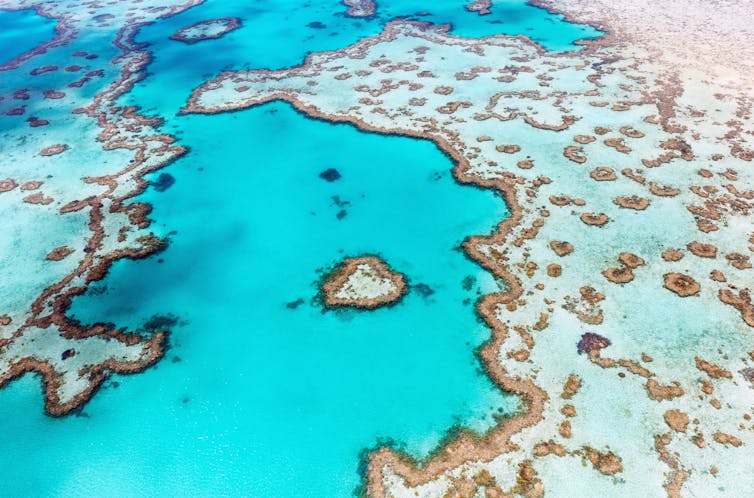
In what seems like excellent news, coral cover in parts of the Great Barrier Reef is at a record high, according to new data from the Australian Institute of Marine Science. But this doesn’t necessarily mean our beloved reef is in good health.
In the north of the reef, coral cover usually fluctuates between 20% and 30%. Currently, it’s at 36%, the highest level recorded since monitoring began more than three decades ago.
This level of coral cover comes hot off the back of a disturbing decade that saw the reef endure six mass coral bleaching events, four severe tropical cyclones, active outbreaks of crown-of-thorns starfish, and water quality impacts following floods. So what’s going on?
High coral cover findings can be deceptive because they can result from only a few dominant species that grow rapidly after disturbance (such as mass bleaching). These same corals, however, are extremely susceptible to disturbance and are likely to die out within a few years.
The Data Are Robust
The Great Barrier Reef spans 2,300 kilometres, comprising more than 3,000 individual reefs. It is an exceptionally diverse ecosystem that features more than 12,000 animal species, plus many thousand more species of plankton and marine flora.
The reef has been teetering on the edge of receiving an “in-danger” listing from the World Heritage Committee. And it was recently described in the State of the Environment Report as being in a poor and deteriorating state.
To protect the Great Barrier Reef, we need to routinely monitor and report on its condition. The Australian Institute of Marine Science’s long-term monitoring program has been collating and delivering this information since 1985.
Its approach involves surveying a selection of reefs that represent different habitat types (inshore, midshelf, offshore) and management zones. The latest report provides a robust and valuable synopsis of how coral cover has changed at 87 reefs across three sectors (north, central and south) over the past 36 years.

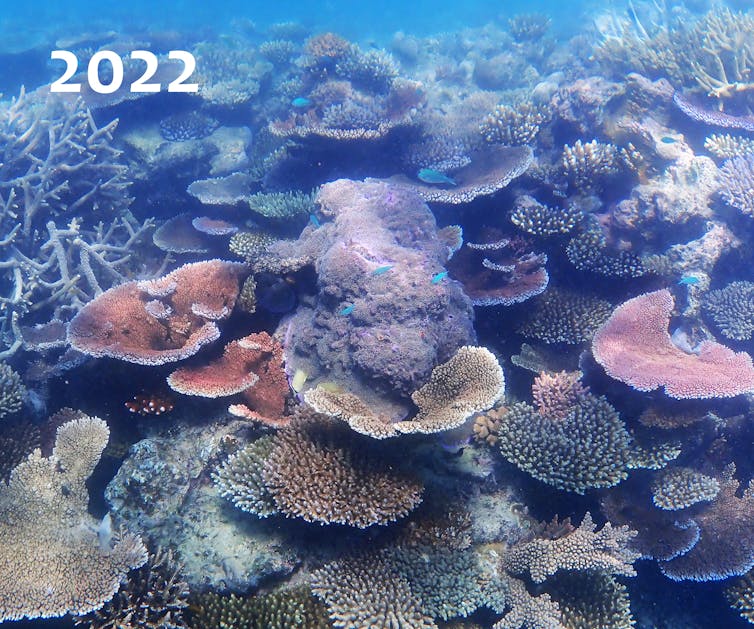
The Results
Overall, the long-term monitoring team found coral cover has increased on most reefs. The level of coral cover on reefs near Cape Grenville and Princess Charlotte Bay in the northern sector has bounced back from bleaching, with two reefs having more than 75% cover.
In the central sector, where coral cover has historically been lower than in the north and south, coral cover is now at a region-wide high, at 33%.
The southern sector has a dynamic coral cover record. In the late 1980s coral cover surpassed 40%, before dropping to a region-wide low of 12% in 2011 after Cyclone Hamish.
The region is currently experiencing outbreaks of crown-of-thorns starfish. And yet, coral cover in this area is still relatively high at 34%.
Based on this robust data set, which shows increases in coral cover indicative of region-wide recovery, things must be looking up for the Great Barrier Reef – right?
Are We Being Catfished By Coral Cover?
In the Australian Institute of Marine Science’s report, reef recovery relates solely to an increase in coral cover, so let’s unpack this term.
Coral cover is a broad proxy metric that indicates habitat condition. It’s relatively easy data to collect and report on, and is the most widely used monitoring metric on coral reefs.
The finding of high coral cover may signify a reef in good condition, and an increase in coral cover after disturbance may signify a recovering reef.
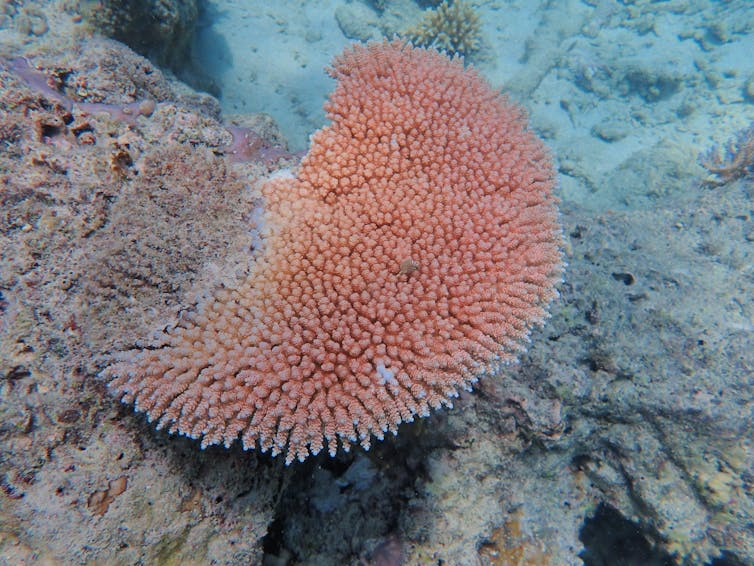
But in this instance, it’s more likely the reef is being dominated by only few species, as the report states that branching and plating Acropora species have driven the recovery of coral cover.
Acropora coral are renowned for a “boom and bust” life cycle. After disturbances such as a cyclone, Acropora species function as pioneers. They quickly recruit and colonise bare space, and the laterally growing plate-like species can rapidly cover large areas.
Fast-growing Acropora corals tend to dominate during the early phase of recovery after disturbances such as the recent series of mass bleaching events. However, these same corals are often susceptible to wave damage, disease or coral bleaching and tend to go bust within a few years.
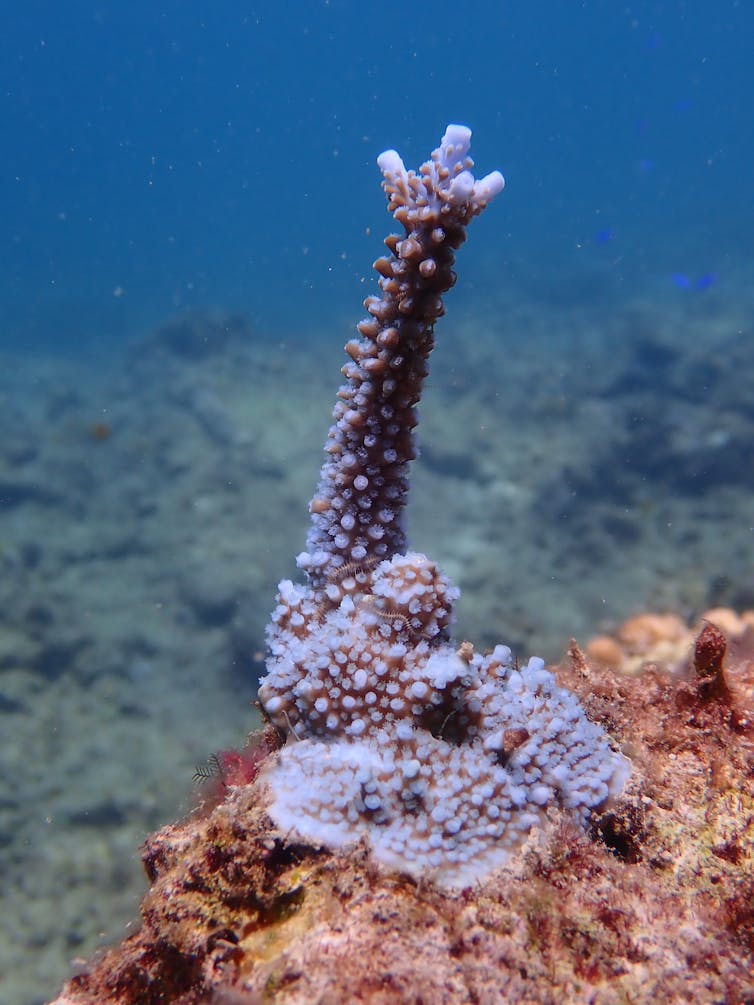
Inferring that a reef has recovered by a person being towed behind a boat to obtain a rapid visual estimate of coral cover is like flying in a helicopter and saying a bushfire-hit forest has recovered because the canopy has grown back.
It provides no information about diversity, or the abundance and health of other animals and plants that live in and among the trees, or coral.
Cautious Optimism
My study, published last year, examined 44 years of coral distribution records around Jiigurru, Lizard Island, at the northern end of the Great Barrier Reef.
It suggested that 28 of 368 species of hard coral recorded at that location haven’t been seen for at least a decade, and are at risk of local extinction.
Lizard Island is one location where coral cover has rapidly increased since the devastating 2016-17 bleaching event. Yet, there is still a real risk local extinctions of coral species have occurred.
While there’s no data to prove or disprove it, it’s also probable that extinctions or local declines of coral-affiliated marine life, such as coral-eating fishes, crustaceans and molluscs have also occurred.
Without more information at the level of individual species, it is impossible to understand how much of the Great Barrier Reef has been lost, or recovered, since the last mass bleaching event.
Based on the coral cover data, it’s tempting to be optimistic. But given more frequent and severe heatwaves and cyclones are predicted in the future, it’s wise to be cautious about the reef’s perceived recovery or resilience.![]()
Zoe Richards, Senior Research Fellow, Curtin University
This article is republished from The Conversation under a Creative Commons license. Read the original article.
A wet spring: what is a ‘negative Indian Ocean Dipole’ and why does it mean more rain for Australia’s east?
Andrew King, The University of MelbourneThe Bureau of Meteorology recently announced a negative Indian Ocean Dipole event is underway.
But what does that mean and how does it affect Australia’s weather? Will we get a reprieve from the flooding rains of recent months?
For many places across the east coast, the answer is no. Spring won’t bring a clean break from this year’s very wet winter.
Warmer Waters Around Australia Equals More Rain
The negative Indian Ocean Dipole, or IOD, has been declared because ocean temperatures are warmer in the tropical east Indian Ocean than in the west Indian Ocean.
The Indian Ocean Dipole is a type of year-to-year climate variability, a bit like the El Niño-Southern Oscillation, but in the Indian Ocean rather than the Pacific.
Once it goes into a particular phase, it usually remains in that phase for a few months. This persistence in sea surface temperature patterns results in predictability in Australian climate conditions.

When we have negative Indian Ocean Dipole conditions we tend to see more rain over southern and eastern Australia.
The Indian Ocean Dipole relationship with Australian rainfall is strongest in September and October, so we’re likely to see wet conditions over the next few months at least.
Warm waters in the east Indian Ocean, like we’re seeing at the moment, increase the occurrence of low pressure systems over the southeast of Australia as well as the amount of moisture in the air.
This means there’s a higher likelihood of rain generally and an increased chance of extreme rain events too.
When Will The Rain Stop?
Another wet outlook is alarming for many people in eastern Australia who have suffered through wetter than normal conditions since 2020.
We’ve seen back-to-back La Niña events and a negative Indian Ocean Dipole in 2021’s winter.
The negative Indian Ocean Dipole is showing its influence in the Bureau of Meteorology’s seasonal predictions. Wetter than normal conditions are forecast for the coming months throughout the east of the continent.
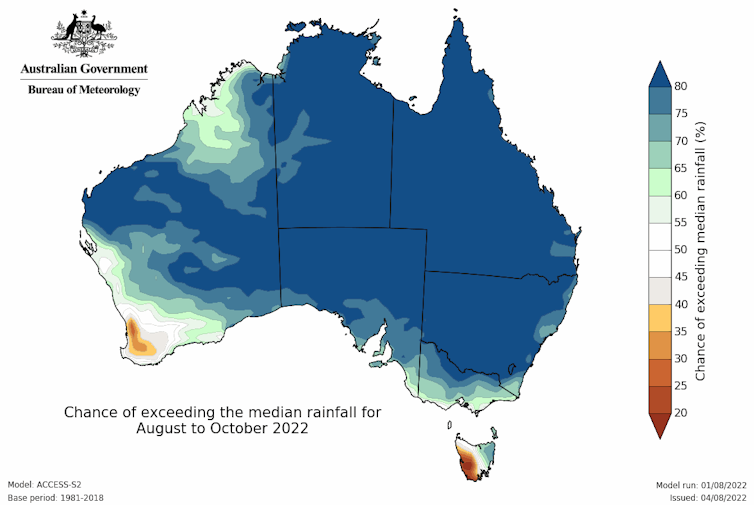
This also happens to be the time of year when seasonal outlooks tend to be most skilful. In the summer, more rain falls in storms and small-scale systems that are harder to forecast well in advance. In winter and spring the outlooks tend to be a bit more accurate but are not always perfect.
Unfortunately, after two consecutive La Niña summers it is also looking increasingly likely we’ll see another La Niña form later this year.
Three La Niña events in a row is not unprecedented but it is unusual. The increased chance of another La Niña raises the odds of wetter conditions persisting for a few more months at least.
Have We Seen The End Of The Cold Weather?
We saw a cold start to winter in the southeast of Australia. Since then temperatures have been below normal across much of northern Australia.
Nationally, we had the coldest July for a decade, but in the past this would have been an unremarkable event as it was only slightly cooler than historical averages.
As we leave the coldest part of winter behind the temperatures will inevitably rise, although we could still have another cold spell.
The Bureau’s seasonal outlook suggests warmer than average daytime temperatures are likely for the north and southern coastal areas. Other areas may be cooler than normal as increased cloud cover and rain are likely to suppress temperatures.
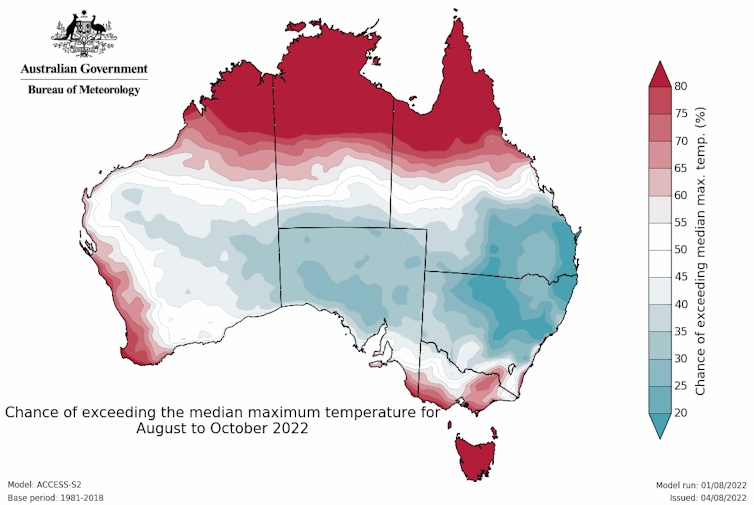
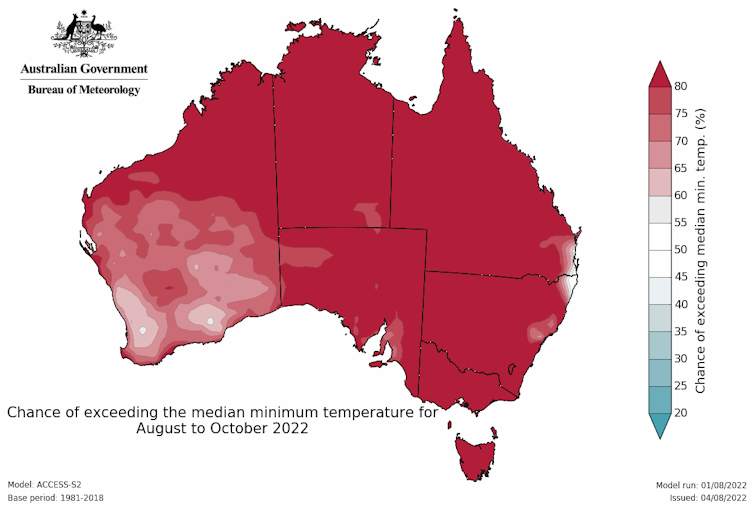
On the other hand, minimum temperatures are likely to be above normal across the country. Increased cloud cover and rain tends to be associated with warmer nights as the cloud prevents the ground from cooling rapidly overnight. This reduces the chance of frost.
Is The Constant Rain A Result Of Climate Change?
For parts of New South Wales, the news of wet conditions being on the cards could not come at a worse time. Sydney and other areas of the eastern seaboard have already received record-breaking rain totals so far this year, including in July. Catchments remain saturated so further rainfall may well lead to more flooding.
Australia has highly variable rainfall and we have seen multi-year spells of persistent wet conditions before – notably in the mid-1970s and 2010-2012.
There isn’t a strong trend in rainfall in the areas that have been devastated by floods and it’s only three years since we saw the driest year on record in New South Wales.
The jury is still out on how climate change affects rainfall over most of Australia.
It is vital we build a better understanding of rainfall changes under global warming so we can plan better for our future climate.![]()
Andrew King, Senior Lecturer in Climate Science, The University of Melbourne
This article is republished from The Conversation under a Creative Commons license. Read the original article.
The length of Earth’s days has been mysteriously increasing, and scientists don’t know why

Atomic clocks, combined with precise astronomical measurements, have revealed that the length of a day is suddenly getting longer, and scientists don’t know why.
This has critical impacts not just on our timekeeping, but also things like GPS and other technologies that govern our modern life.
Over the past few decades, Earth’s rotation around its axis – which determines how long a day is – has been speeding up. This trend has been making our days shorter; in fact, in June 2022 we set a record for the shortest day over the past half a century or so.
But despite this record, since 2020 that steady speedup has curiously switched to a slowdown – days are getting longer again, and the reason is so far a mystery.
While the clocks in our phones indicate there are exactly 24 hours in a day, the actual time it takes for Earth to complete a single rotation varies ever so slightly. These changes occur over periods of millions of years to almost instantly – even earthquakes and storm events can play a role.
It turns out a day is very rarely exactly the magic number of 86,400 seconds.
The Ever-Changing Planet
Over millions of years, Earth’s rotation has been slowing down due to friction effects associated with the tides driven by the Moon. That process adds about about 2.3 milliseconds to the length of each day every century. A few billion years ago an Earth day was only about 19 hours.
For the past 20,000 years, another process has been working in the opposite direction, speeding up Earth’s rotation. When the last ice age ended, melting polar ice sheets reduced surface pressure, and Earth’s mantle started steadily moving toward the poles.
Just as a ballet dancer spins faster as they bring their arms toward their body – the axis around which they spin – so our planet’s spin rate increases when this mass of mantle moves closer to Earth’s axis. And this process shortens each day by about 0.6 milliseconds each century.
Over decades and longer, the connection between Earth’s interior and surface comes into play too. Major earthquakes can change the length of day, although normally by small amounts. For example, the Great Tōhoku Earthquake of 2011 in Japan, with a magnitude of 8.9, is believed to have sped up Earth’s rotation by a relatively tiny 1.8 microseconds.
Apart from these large-scale changes, over shorter periods weather and climate also have important impacts on Earth’s rotation, causing variations in both directions.
The fortnightly and monthly tidal cycles move mass around the planet, causing changes in the length of day by up to a millisecond in either direction. We can see tidal variations in length-of-day records over periods as long as 18.6 years. The movement of our atmosphere has a particularly strong effect, and ocean currents also play a role. Seasonal snow cover and rainfall, or groundwater extraction, alter things further.
Why Is Earth Suddenly Slowing Down?
Since the 1960s, when operators of radio telescopes around the planet started to devise techniques to simultaneously observe cosmic objects like quasars, we have had very precise estimates of Earth’s rate of rotation.
A comparison between these estimates and an atomic clock has revealed a seemingly ever-shortening length of day over the past few years.
But there’s a surprising reveal once we take away the rotation speed fluctuations we know happen due to the tides and seasonal effects. Despite Earth reaching its shortest day on June 29 2022, the long-term trajectory seems to have shifted from shortening to lengthening since 2020. This change is unprecedented over the past 50 years.
The reason for this change is not clear. It could be due to changes in weather systems, with back-to-back La Niña events, although these have occurred before. It could be increased melting of the ice sheets, although those have not deviated hugely from their steady rate of melt in recent years. Could it be related to the huge volcano explosion in Tonga injecting huge amounts of water into the atmosphere? Probably not, given that occurred in January 2022.
Scientists have speculated this recent, mysterious change in the planet’s rotational speed is related to a phenomenon called the “Chandler wobble” – a small deviation in Earth’s rotation axis with a period of about 430 days. Observations from radio telescopes also show that the wobble has diminished in recent years; the two may be linked.
One final possibility, which we think is plausible, is that nothing specific has changed inside or around Earth. It could just be long-term tidal effects working in parallel with other periodic processes to produce a temporary change in Earth’s rotation rate.
Do We Need A ‘Negative Leap Second’?
Precisely understanding Earth’s rotation rate is crucial for a host of applications – navigation systems such as GPS wouldn’t work without it. Also, every few years timekeepers insert leap seconds into our official timescales to make sure they don’t drift out of sync with our planet.
If Earth were to shift to even longer days, we may need to incorporate a “negative leap second” – this would be unprecedented, and may break the internet.
The need for negative leap seconds is regarded as unlikely right now. For now, we can welcome the news that – at least for a while – we all have a few extra milliseconds each day.![]()
Matt King, Director of the ARC Australian Centre for Excellence in Antarctic Science, University of Tasmania and Christopher Watson, Senior Lecturer, School of Geography, Planning, and Spatial Sciences, University of Tasmania
This article is republished from The Conversation under a Creative Commons license. Read the original article.
Business can no longer ignore extreme heat events – it’s becoming a danger to the bottom line

When record-breaking heatwaves cause train tracks to bend, airport runways to buckle, and roads to melt, as happened in the United Kingdom last month, it is likely that business performance will suffer.
The problem is not going away, either. Businesses will need to better manage extreme heat risk. But are investors sufficiently informed on the economic toll caused by the increasing frequency of extreme weather?
It is becoming clearer that extreme heat can have devastating and costly effects. People are dying, energy grids are struggling to cope, transport is disrupted, and severe drought is straining agriculture and water reserves.
While the frequency of these events is increasing, more worrisome is that heat intensity is also increasing. Clearly, businesses are not immune to the need to adapt, though their silence might make you think otherwise.
Rising Temperatures Affect Everything
Keeping cool, transporting goods, and scheduling flights as runways melted were just some of the challenges people and businesses have faced during the current European summer.
As it became apparent that our workplaces and infrastructure might not be able to cope with extreme heat, we also saw unions call for workers to stay home. But could workers take the day off? The UK’s Health and Safety Executive stated:
There is no maximum temperature for workplaces, but all workers are entitled to an environment where risks to their health and safety are properly controlled.
Are these rules sufficient in this new normal? Some EU countries already have upper limits, but many do not. The Washington Post reported US federal action might be coming due to concerns over extreme heat for workers. Mitigation of these factors will no doubt be costly.
While media reports highlight the toll on workers and businesses, there is little empirical evidence on the financial hit to business. Here is where our research comes into play: how much of an impact does extreme heat have on business profitability?

Heat Hitting The Bottom Line
We focused on the European Union and the UK because the region has a diversity of climate and weather extremes. They are a major economic force, with strong policies on decarbonising their economies, but also rely on coal, gas, and oil for many sectors.
When it’s hot, these countries are forced to burn more fossil fuel to cool overheated populations, contrary to the need and desire to do the opposite.
With detailed records on heat events at a local level, we connected weather data to a large sample of private and public companies in the EU and the UK. We focused on two critical aspects of a firm’s financial performance around a heat spell (at least three consecutive days of excessive heat): the effect on profit margin and the impact on sales. We also examined firms’ stock performance.
We found that businesses do suffer financially, and the effects are wide ranging.
For the average business in our sample, these impacts translate into an annualised loss of sales of about 0.63% and a profit margin decrease of approximately 0.16% for a one degree increase in temperature above a critical level of about 25C.
Aggregated for all firms in our sample, UK and EU businesses lose almost US$614 million (NZ$975 million) in annual sales for every additional degree of excessive temperature.
Impact Bigger Than The Data Shows
We also found the intensity of a heat wave is more important than its duration.
This financial effect might sound small, but remember, this is an average effect across the EU and the UK. The localised effect is much larger for some firms, especially those in more southern latitudes.
The stock market response to extreme heat is also muted, perhaps for the same reason. We find stock prices on average dropped by about 22 basis points in response to a heat spell.
These average annualised effects include businesses’ efforts to recoup lost sales during heat spells. They also include businesses in certain sectors and regions that appear to benefit from critically high heat spell temperatures, such as power companies and firms in northern European countries.
While we show a systematic and robust result, our evidence probably further underestimates the total effects of heat waves. That’s because businesses disclose very little about those effects due to lax disclosure rules and stock exchange regulations relating to extreme weather.

Financial Data Part Of Climate Change
Without a doubt, better disclosure will help untangle these effects.
Ideally, financial data needs to be segmented by climate risk and extreme heat dimensions so investors are better able to price the risk. Regulators need to pay attention here. Investors must be able to price material risk from extreme weather.
A good example is New Zealand, which is about to mandate climate risk disclosures with reporting periods starting in 2023. Such mandates recognise that poor disclosure of climate risk is endemic, and we don’t have the luxury of time.
For those businesses negatively affected, disclosing the number and cost of lost hours and the location of the damage would be helpful. However, it is not yet clear if climate disclosure standards effectively capture these risks, as companies have significant discretion about what to disclose.
It is not necessarily all about cost – some sectors might even benefit. While power companies, for example, might report increased sales from increased energy consumption, they are also constrained by the grid and the increased cost of production.
And our evidence suggests there is little overall benefit to the energy sector. This doesn’t rule out some windfall profits, so we need to understand more about both the positive and negative effects on each industry.
Finally, this July saw temperatures in the United Kingdom soar to 20C above normal. Can businesses cope? Next time you feel the heat, pause to ask if this is also hitting the bottom line of your workplace or investment portfolio.![]()
David Lont, Professor of Accounting and Finance, University of Otago; Martien Lubberink, Associate Professor of Economics, Te Herenga Waka — Victoria University of Wellington, and Paul Griffin, Distinguished Professor of Management, University of California, Davis
This article is republished from The Conversation under a Creative Commons license. Read the original article.
Good news: highway underpasses for wildlife actually work

Australia’s wildlife is increasingly threatened with extinction. One key driver of this is habitat clearing and fragmentation. An associated factor is the expansion of our road network, particularly the upgrade and duplication of our highways.
Governments expand our major highways in the interests of road safety and traffic flow. But major roads become barriers to wildlife movement, as well as places where cars can hit and kill many animals.
Our new research explores whether highway underpasses help animals safely cross roads. We wanted to know if animals actually use underpasses – and if they had hidden dangers by funnelling animals through a confined space, making it easier for predators.
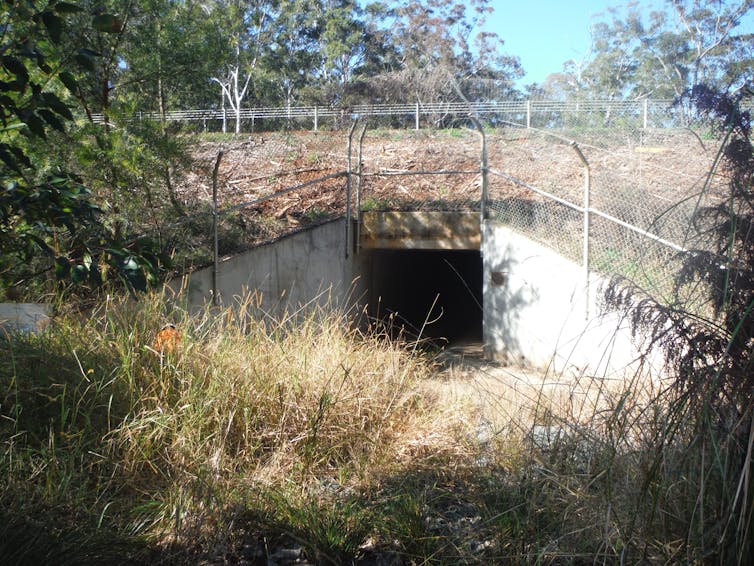
What Did We Find?
To find out whether underpasses work, we used wildlife cameras to monitor 12 underpasses for more than two years in north-east New South Wales. Five under the Oxley Highway at Port Macquarie and seven under the Pacific Highway south of Grafton.
What we found was quite astounding. Vastly more animals than we expected were using the underpass. We detected over 4,800 medium-large mammals and goannas, while smaller species such as snakes and rodents also used the underpasses but were less reliably detected by our cameras.
Species such as eastern grey kangaroos, swamp wallabies, red-necked wallabies, red-necked pademelons and lace monitors crossed some underpasses more than once a week. Rufous bettongs and echidnas crossed individual underpasses every two to four weeks. These crossing rates suggest animals use underpasses to forage on both sides of the freeways.
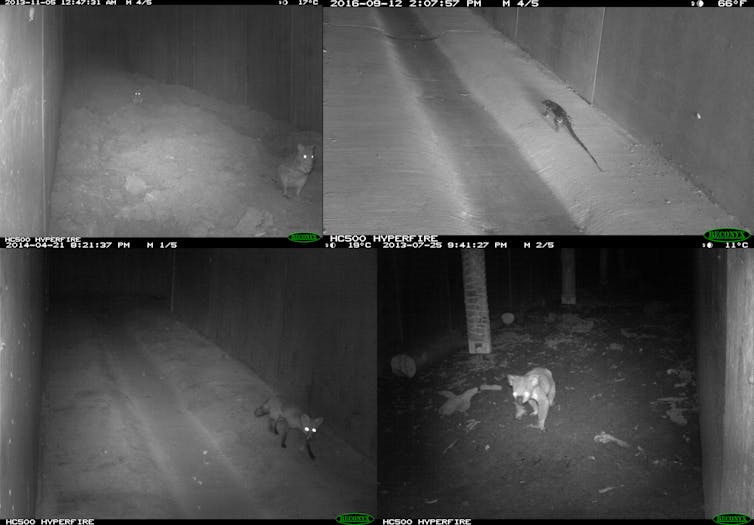
We were particularly interested in whether the endangered koala would use the underpasses. They did, occasionally. We found they were not avoiding the underpasses, because they were detected infrequently in the adjoining forest.
Do underpasses with fences reduce or eliminate wildlife roadkill? Anecdotal evidence for our study road at Port Macquarie suggested roadkill rates were very low. Only four roadkills (two eastern grey kangaroos, one red-necked wallaby and one brushtail possum) were reported to the local animal welfare group for this road segment over a three year period encompassing our study. However, we should not be complacent. Roadside fences develop holes and need to be repaired to maintain their value.
Do Underpasses Attract Predators?
Many people believe underpasses increase predator risk. This idea – known as the “prey-trap hypothesis” – suggests predators will be drawn to places where they can easily pick off unsuspecting animals funnelled into the confined space of an underpass.
We detected red foxes, feral cats and dingoes using these underpasses. But of these, only foxes were detected frequently enough to be a potential concern.
We tested the prey-trap hypothesis by testing three predictions. If the hypothesis was correct, foxes should be more common in the underpasses than in the forest, foxes should focus their activity at underpasses where potential prey are more abundant and the timing of use of underpasses by foxes and potential prey should coincide.
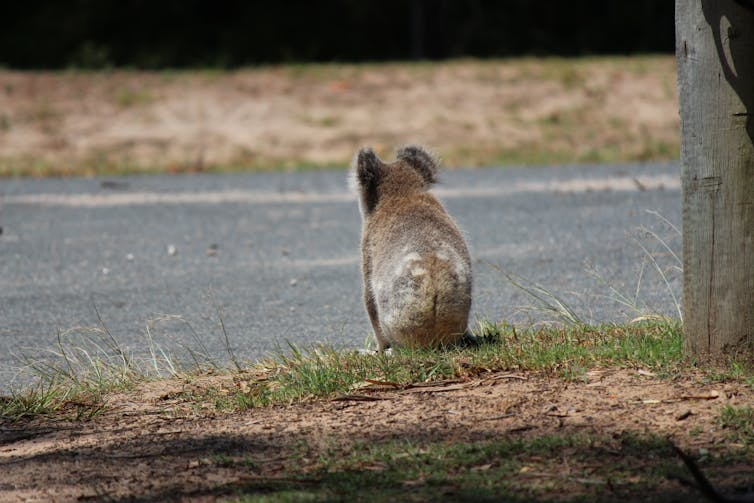
What we observed didn’t match these predictions. At Port Macquarie, foxes were detected at three underpasses, while being absent from two. Of the three underpasses used by foxes, one particularly favoured by foxes was not favoured by bandicoots and pademelons, the potential prey.
We expected to detect foxes close in time to prey detection. But on average, there was a gap of over three hours between detecting foxes and bandicoots or pademelons, and over four hours between foxes and wallabies. We also found foxes were less often detected on nights when potential prey were using the underpasses.
These observations suggest potential prey may be avoiding the underpasses when foxes are about.
What Conclusions Can We Draw?
Underpasses are a useful tool to enable wildlife to move across landscapes with roads. Not all ground-dwelling species of wildlife will find underpasses to their liking, but many do.
Could we retrofit underpasses to highways with very high roadkill rates? That depends. The conditions have to be right. For an underpass to be installed, you need the road to be adequately elevated. You also need roadside fences, to prevent animals taking the shorter but much more dangerous path across the highway. These fences don’t work if there are intersections, freeway off ramps or driveways.
What we need is to prioritise areas where underpasses are possible, where threatened species exist and roadkill rates are high. It’s very expensive to retrofit underpasses into existing roads, which is why we have to focus on priority areas.
In the future, it could be possible to use cattle-grid type structures to stop animals like koalas getting around fences and onto the roads. These are currently being trialled.
To figure out how to make underpasses even more effective, we need more publicly available research. At present, there’s a great deal of monitoring sitting in expensive but unpublished reports from consultants.
Underpasses are not a panacea for impacts on wildlife. And we shouldn’t use their effectiveness as a justification to run highways through pristine areas. They’re a tool to minimise impacts of road projects that have wide community support. ![]()
Ross Goldingay, Lecturer in Wildlife Conservation & Biology, Southern Cross University
This article is republished from The Conversation under a Creative Commons license. Read the original article.
Troubling new research shows warm waters rushing towards the world’s biggest ice sheet in Antarctica

Warmer waters are flowing towards the East Antarctic ice sheet, according to our alarming new research which reveals a potential new driver of global sea-level rise.
The research, published today in Nature Climate Change, shows changing water circulation in the Southern Ocean may be compromising the stability of the East Antarctic ice sheet. The ice sheet, about the size of the United States, is the largest in the world.
The changes in water circulation are caused by shifts in wind patterns, and linked to factors including climate change. The resulting warmer waters and sea-level rise may damage marine life and threaten human coastal settlements.
Our findings underscore the urgency of limiting global warming to below 1.5℃, to avert the most catastrophic climate harms.
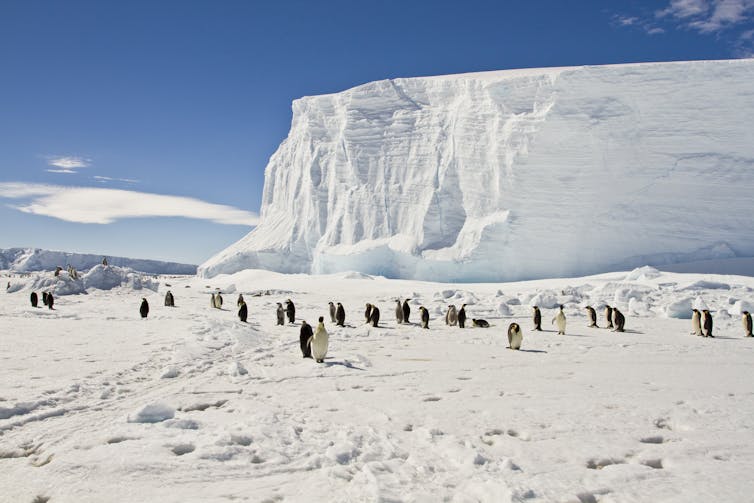
Ice Sheets And Climate Change
Ice sheets comprise glacial ice that has accumulated from precipitation over land. Where the sheets extend from the land and float on the ocean, they are known as ice shelves.
It’s well known that the West Antarctic ice sheet is melting and contributing to sea-level rise. But until now, far less was known about its counterpart in the east.
Our research focused offshore a region known as the Aurora Subglacial Basin in the Indian Ocean. This area of frozen sea ice forms part of the East Antarctic ice sheet.
How this basin will respond to climate change is one of the largest uncertainties in projections of sea-level rise this century. If the basin melted fully, global sea levels would rise by 5.1 metres.
Much of the basin is below sea level, making it particularly sensitive to ocean melting. That’s because deep seawater requires lower temperatures to freeze than shallower seawater.

What We Found
We examined 90 years of oceanographic observations off the Aurora Subglacial Basin. We found unequivocal ocean warming at a rate of up to 2℃ to 3℃ since the earlier half of the 20th century. This equates to 0.1℃ to 0.4℃ per decade.
The warming trend has tripled since the 1990s, reaching a rate of 0.3℃ to 0.9℃ each decade.
So how is this warming linked to climate change? The answer relates to a belt of strong westerly winds over the Southern Ocean. Since the 1960s, these winds have been moving south towards Antarctica during years when the Southern Annular Mode, a climate driver, is in a positive phase.
The phenomenon has been partly attributed to increasing greenhouse gases in the atmosphere. As a result, westerly winds are moving closer to Antarctica in summer, bringing warm water with them.
The East Antarctic ice sheet was once thought to be relatively stable and sheltered from warming oceans. That’s in part because it’s surrounded by very cold water known as “dense shelf water”.
Part of our research focused on the Vanderford Glacier in East Antarctica. There, we observed the warm water replacing the colder dense shelf water.
The movement of warm waters towards East Antarctica is expected to worsen throughout the 21st century, further threatening the ice sheet’s stability.
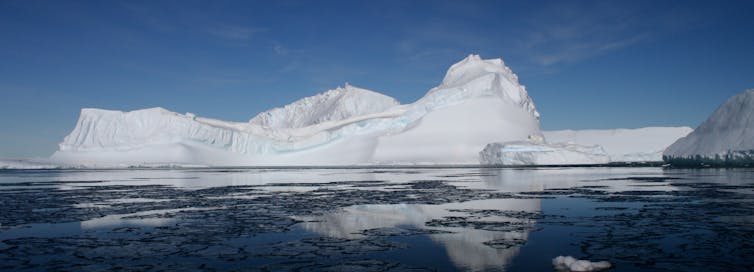
Why This Matters To Marine Life
Previous work on the effects of climate change in the East Antarctic has generally assumed that warming first occurs in the ocean’s surface layers. Our findings – that deeper water is warming first – suggests a need to re-think potential impacts on marine life.
Robust assessment work is required, including investment in monitoring and modelling that can link physical change to complex ecosystem responses. This should include the possible effects of very rapid change, known as tipping points, that may mean the ocean changes far more rapidly than marine life can adapt.
East Antarctic marine ecosystems are likely to be highly vulnerable to warming waters. Antarctic krill, for example, breed by sinking eggs to deep ocean depths. Warming of deeper waters may affect the development of eggs and larvae. This in turn would affect krill populations and dependent predators such as penguins, seals and whales.
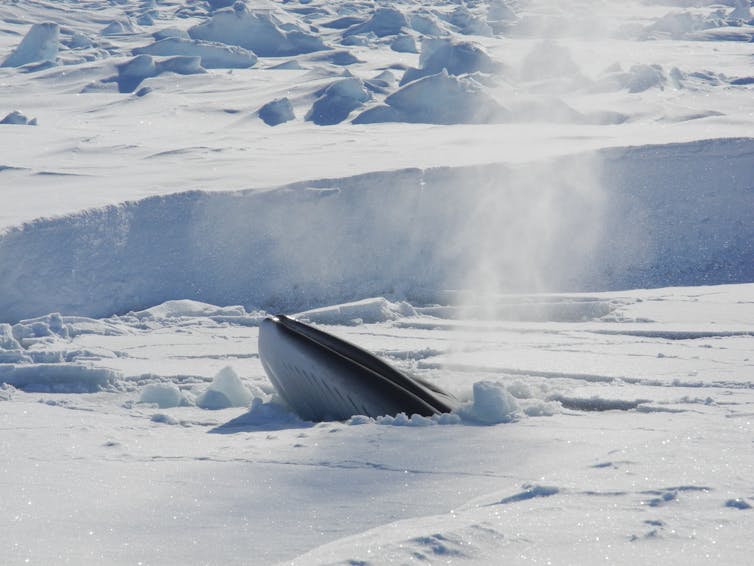
Limiting Global Warming Below 1.5℃
We hope our results will inspire global efforts to limit global warming below 1.5℃. To achieve this, global greenhouse gas emissions need to fall by around 43% by 2030 and to near zero by 2050.
Warming above 1.5℃. greatly increases the risk of destabilising the Antarctic ice sheet, leading to substantial sea-level rise.
But staying below 1.5℃ would keep sea-level rise to no more than an additional 0.5 metres by 2100. This would enable greater opportunities for people and ecosystems to adapt.![]()
Laura Herraiz Borreguero, Physical oceanographer, CSIRO; Alberto Naveira Garabato, Professor, National Oceanography Centre, University of Southampton, and Jess Melbourne-Thomas, Transdisciplinary Researcher & Knowledge Broker, CSIRO
This article is republished from The Conversation under a Creative Commons license. Read the original article.
The Greens’ climate trigger policy could become law. Experts explain how it could help cut emissions – and why we should be cautious
Brendan Sydes, The University of Melbourne; Anita Foerster, Monash University, and Laura Schuijers, University of SydneyAustralia’s freshly elected parliament is hashing out the details of Labor’s Climate Change Bill, which would enshrine an emissions reduction target into federal law. The Greens have the numbers to block the bill in the Senate, and are likely to seek concessions from Labor in return for their support.
Labor has already ruled out the demand to ban new coal and gas projects, saying this would devastate the economy. But Labor did not rule out another Greens policy: introducing a “climate trigger” into Australia’s environment law.
Under that proposal, future projects – such as a new mine or high-emissions industrial plant – would be assessed on the climate harms they’d potentially cause.
Let’s take a closer look at how the climate trigger would work, what it would achieve and, crucially, how it could help Australia reduce emissions.
What Is The Climate Trigger?
To understand the proposed climate trigger, we should first outline the federal government’s role in assessing and approving new projects under Australia’s national environment law, the Environment Protection and Biodiversity Conservation (EPBC) Act.
The government’s role under the act is to assess the impacts of proposed projects on “matters of national environmental significance”. There are nine designated matters, including threatened species, wetlands of international significance and world heritage sites.
If a project is likely to have a significant impact on one of these matters, then the environmental impact assessment and approval scheme is “triggered”.
Surprisingly for legislation intended to protect the environment, climate change is not presently designated as a matter of national environmental significance. This means it’s considered only indirectly, such as how climate change impacts might harm a protected wetland or a threatened species.
The proposed climate trigger would add climate change to the list, and allow it to be dealt with head on.
In practice, this means the impacts of a proposed project on the climate would be thoroughly assessed, and then weighed in the environment minister’s final decision on whether the proposal should be approved.
Past Climate Trigger Proposals
The climate trigger is not a new idea. In fact, when the EPBC Act was first introduced in 1999, the then environment minister sought to develop a greenhouse gas trigger. Nothing eventuated from that commitment.
In 2005, Anthony Albanese, then the shadow environment minister, introduced the Avoiding Dangerous Climate Change (Climate Change Trigger) Bill, but this also did not proceed.
And in 2020, the Greens introduced a climate trigger bill in the Senate which lapsed with the last parliament. The Greens’ new bill will presumably be based on this one.
Meanwhile, a major independent review of the EPBC Act in 2020 by Professor Graeme Samuel did not support a climate trigger on the basis that reducing emissions is best left to other policies and programs.
Professor Samuel did, however, say new projects should fully disclose all potential emissions as part of the assessment process. He did not elaborate on how this should be treated in approval decisions.
What Could It Achieve?
The climate trigger could be defined in terms of an emissions threshold, or by reference to emissions intensive activities, or by some combination of these. It could, for example, require any development likely to produce over 100,000 tonnes of carbon dioxide equivalent per year to be assessed under the act.
Coal mining and gas extraction are significant contributors to Australia’s domestic emissions.
Approving more of these projects will not only make it harder for Australia to meet its climate targets, but also, is completely contrary to the goals of the Paris Agreement. Limiting global warming to 1.5℃ above pre-industrial levels this century means putting a stop to new coal and gas.
Australia is the third largest exporter of fossil fuels, behind Russia and Saudi Arabia. Our fossil fuel exports account for more than double our direct emissions. Labor’s emissions reduction targets do not address these downstream emissions.
A climate trigger would see Australia stepping up to take some responsibility for the total emissions from such fossil fuel export projects, including the emissions from burning coal and gas overseas.
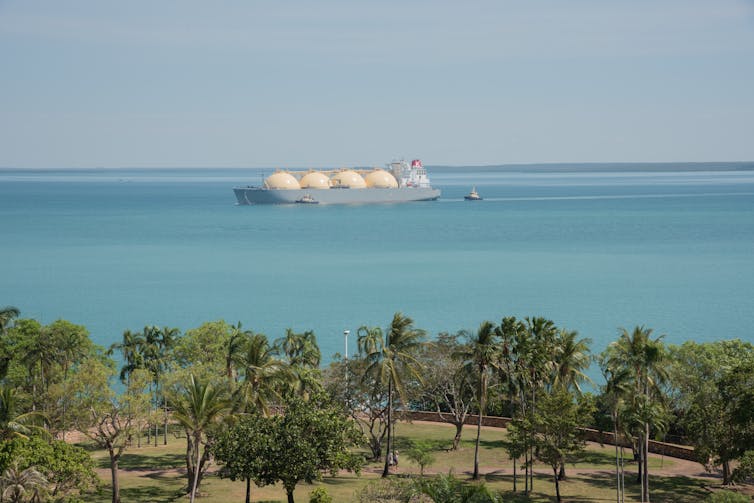
Even if new fossil fuel projects are given the go ahead, requiring proponents to disclose emissions through the assessment process would make it possible to regulate these emissions using conditions on approvals.
This would help to address significant problems with new mine proponents underestimating their emissions.
Depending on how it’s framed, a climate trigger could also play a role in regulating emissions from other sources, such as land clearing.
Why We Should Be Cautious
There are two reasons to be cautious about what a new climate trigger might achieve.
First, a climate trigger would require only projects which trigger the act to be assessed and a decision made on approval. This is well short of demands by Greens and others to halt new fossil fuel extraction projects.
We could expect that the climate trigger would make proponents think carefully about emissions before submitting their projects for approval. But the trigger would not of itself prevent new fossil fuel projects from being proposed and approved.
If the desired result is to stop new coal and gas, there are better and more direct ways to legislate for this result.
Second, the EPBC Act is widely acknowledged as failing to protect matters of national environmental significance. It has failed to protect threatened species, world heritage sites and internationally recognised wetlands – all of which have been “triggers” under the legislation since 1999.
Adding a new climate trigger to an already failing EPBC Act may not achieve very much without additional reforms.
This includes implementing national environmental standards, as recommended by Professor Samuel, and introducing a national Environment Protection Agency to enforce the act, as promised by the Albanese government.
Arguably, proposals for a climate trigger should be dealt with as part of this larger overhaul of the act.
Still, a climate trigger could bring some real teeth to the government’s proposed Climate Change Act, whether introduced as a stand alone amendment to the EPBC Act or as part of wider reforms expected next year.
Perhaps most importantly, a climate trigger would also be a step toward Australia recognising the global harm caused by fossil fuels extracted in Australia, and the need to take greater responsibility for deciding whether these projects should be allowed to proceed.![]()
Brendan Sydes, Honorary Senior Fellow, Melbourne Law Masters, The University of Melbourne; Anita Foerster, Associate professor, Monash University, and Laura Schuijers, Deputy Director, Australian Centre for Climate and Environmental Law and Lecturer in Law, University of Sydney
This article is republished from The Conversation under a Creative Commons license. Read the original article.
Pacific nations are extraordinarily rich in critical minerals. But mining them may take a terrible toll

Plundering the Pacific for its rich natural resources has a long pedigree. Think of the European companies strip-mining Nauru for its phosphate and leaving behind a moonscape.
There are worrying signs history may be about to repeat, as global demand soars for minerals critical to the clean energy transition. This demand is creating pressure to extract more minerals from the sensitive lands and seabeds across the Pacific. Pacific leaders may be attracted by the prospect of royalties and economic development – but there will be a price to pay in environmental damage.
As our new research shows, this dilemma has often been ignored due to the urgency of the green transition. But if we fail to address the social and environmental costs of extraction, the transition will not be fair.
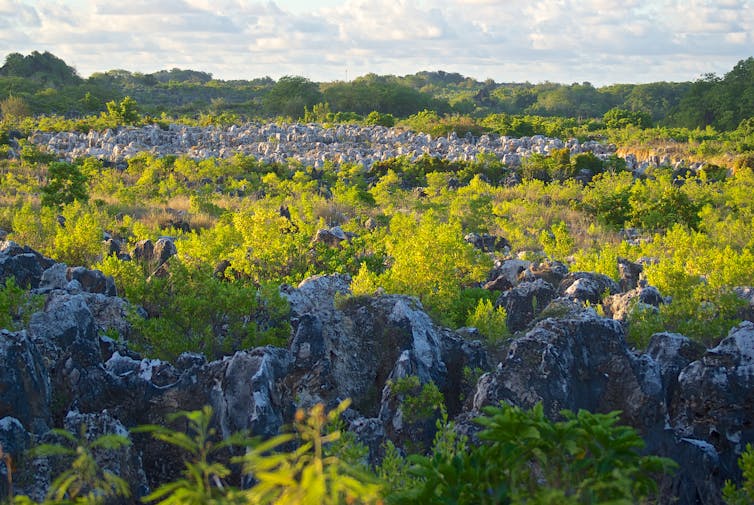
Trouble In Paradise: Climate Change And Globalisation
Nations across the Pacific now face a double threat: climate change and the consequences of extractive industries. Rising sea levels, more powerful cyclones and droughts threaten low-lying nations, while the legacy of the worst effects of global resource extraction industries lives on.
Now they face a resurgence. You might not associate the small islands of the Pacific with mining, but the region contains enormous deposits of minerals and metals needed for the global energy transition.
Under the soils of New Caledonia lie between 10 and 30 per cent of the world’s known reserves of nickel, a critical component of the lithium-ion batteries which will power electric cars and stabilise renewable-heavy grids. In Papua New Guinea and Fiji there are vast undeveloped copper reserves. It’s estimated cobalt – another key battery component – is found in the deep sea around the Pacific in quantities several times larger than land resources.
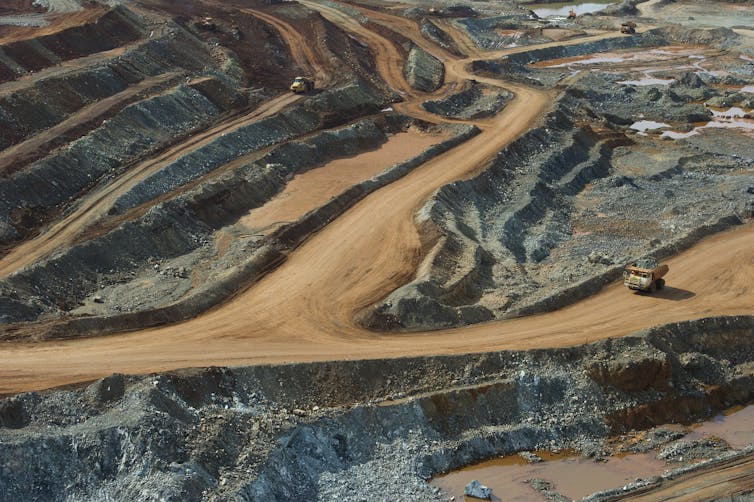
Sensing this opportunity, miners from Australia, China and elsewhere are lining up to take advantage of global demand while positioning themselves as vital contributors to climate action.
You might think this is a win-win – the world gets critical minerals, and the Pacific gets royalties. While some Pacific nations like Papua New Guinea and New Caledonia see an opportunity for economic development, the problem is that historically, many Pacific states have struggled to control the excesses of the extractive industries and convert their natural mineral wealth into broad based human development.
Yes, building low-carbon energy systems to power a low-carbon economy will require vast amounts of minerals and metals for new technologies and energy infrastructure.
But supplying these resources shouldn’t come at the expense of communities and environments.
Our research reveals that extractive projects planned or underway in the Pacific are located in some of the world’s most complex and volatile environmental, social and governance conditions in the world.
Think of the historic and current tensions in Solomon Islands or the separatist movement radicalised by mining in Papua New Guinea’s Bougainville region. Increased pressure to mine in combustible regions is risky.
Will This Place Pressure On Pacific Unity?
Pacific leaders understand these risks. At last month’s forum, they endorsed a new 30 year strategy for the Pacific, which speaks to this double bind. The strategy declares the urgent need to act on climate while also calling for careful stewardship of the region’s natural resources to boost socio-economic growth and improve the lives of their citizens.
Tourism campaigns by Pacific nations often show pictures of happy people in lush environments. But the reality is much of the region is chronically unequal.
Many Pacific leaders want development opportunities and resent being told what to do with their natural resources by the leaders of developed nations. Others, however, are concerned about the damage mining may do to their environment.
This emerging divide is why dreams of regional unity remain elusive. Despite calls for a unified Pacific voice, different leaders have very different views about mining.
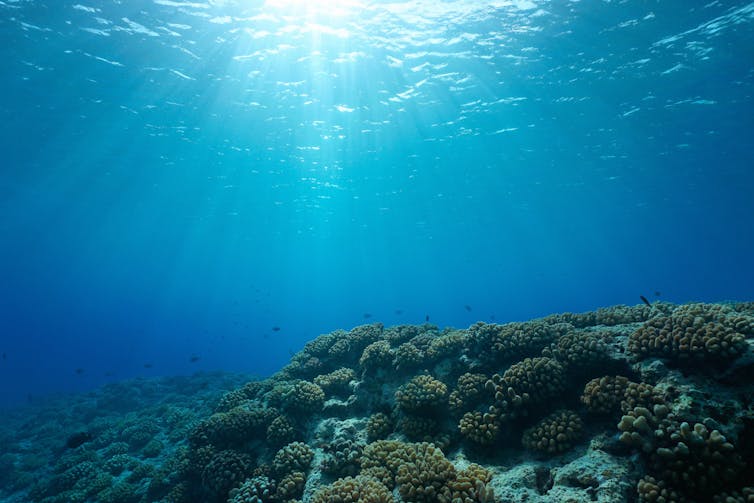
In recent months, we’ve seen the Federated States of Micronesia join Samoa, Fiji and Palau in calling for a moratorium on deep sea mining, while Nauru, Tonga, Kiribati and Cook Islands have already backed seabed projects.
In February this year, Cook Islands granted three licences to explore for polymetallic nodules – lucrative lumps of multiple metals – in the seas to which they have exclusive economic rights.
You can see the appeal – an estimated 8.9 billion tons of nodules lie strewn around the ocean floor. These deposits are worth an estimated $A14.4 trillion. Trillion, not billion. This is the world’s largest and richest known resource of polymetallic nodules within a sovereign territory, and a massive share of the world’s currently known cobalt resources.
These nodules are so rich in four essential metals needed for batteries (cobalt, nickel, copper and manganese) that they are often called “a battery in a rock”.
Meanwhile the Papua New Guinean government is considering enormous new gold and copper mines which lie in ecologically and socially vulnerable areas. Locals, environmentalists and experts have already sounded warnings over a project planned at the headwaters of the untouched Sepik River. No one wants to see a repeat of the Ok Tedi mining disaster.
Similar debates are raging over whether to reopen the lucrative but disastrous Panguna copper mine on Bougainville Island, as local leaders look for ways to fund their forthcoming independence from Papua New Guinea.
Policymakers Must Pay Attention
To date, Australian policymakers have not considered the risks of huge new mining operations across the Pacific. In part, this is because some of these mines are framed as a key way to tackle climate change, the largest threat to the region.
This has to change. Action on climate change is vital – but the Pacific’s peoples must actually benefit from the mining of their resources. If this mineral rush isn’t done carefully, we could see the profits disappear overseas – and the environmental mess left behind for Pacific nations to deal with.
This challenge comes at a time of heightened geostrategic competition, as China moves into the region seeking influence and raw materials ranging from wood to fish to minerals.
If Australia’s new government is serious about using its sizeable regional influence to tackle climate change in the Pacific, it must ensure it is done justly and fairly. We must focus our policy attentions on the complicated knot of clean energy and intensified mining. ![]()
Nick Bainton, Associate Professor, The University of Queensland and Emilka Skrzypek, Senior Policy Fellow, University of St Andrews
This article is republished from The Conversation under a Creative Commons license. Read the original article.
‘Laid awake and wept’: destruction of nature takes a toll on the human psyche. Here’s one way to cope
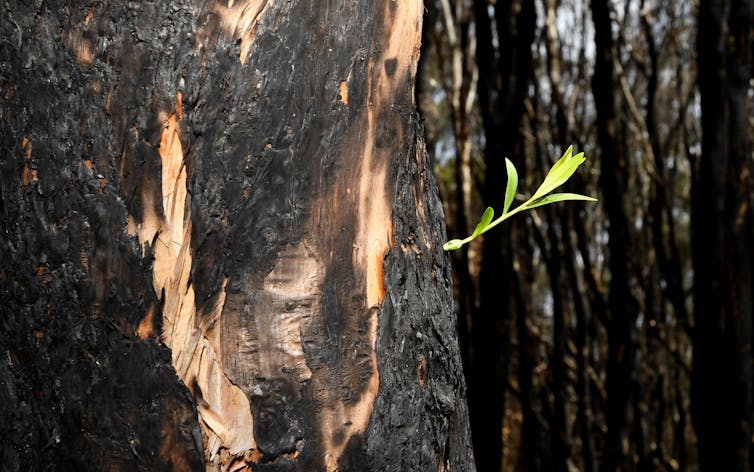
Predictions of catastrophic climate change seem endless – and already, its effects are hard to ignore. Events such as bushfires, floods and species loss generate feelings of sadness, anxiety and grief in many people. But this toll on the human psyche is often overlooked.
Our research has investigated the negative emotions that emerge in Australians in response to the destruction of nature, and how we can process them. We’ve found being in nature is crucial.
Our latest research examined an eco-tourism enterprise in Australia. There, visitors’ emotional states were often connected to nature’s cycles of decay and regeneration. As nature renews, so does human hope.
As our climate changes, humans will inhabit and know the world differently. Our findings suggest nature is both the trigger for, and answer to, the grief that will increasingly be with us.
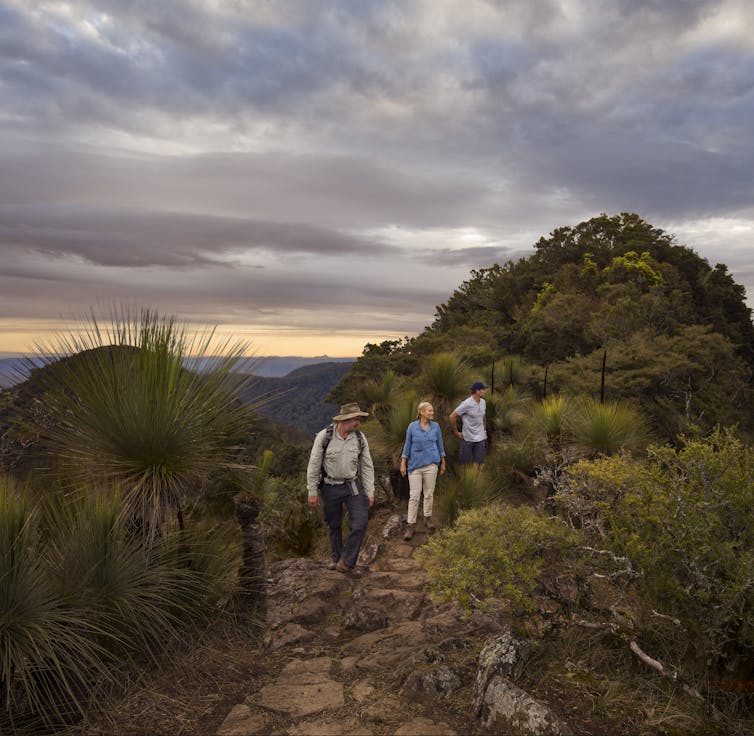
Emotions Of Climate Distress
Our research has previously examined how acknowledging and processing emotions can help humans heal in a time of significant planetary change. This healing can often come about through social, collective approaches involving connection with the Earth’s natural systems.
Eco-tourism experiences offer opportunities to connect with nature. Our recent research examined the experiences of tourists who had recently stayed at Mount Barney Lodge in Queensland’s Scenic Rim region.
The eco-tourism business is located on Minjelha Dhagun Country, next to the World Heritage-listed Mount Barney National Park. The region was badly affected by the Black Summer bushfires of 2019-2020.
Through an online questionnaire conducted last year, we sought to understand visitors’ psychological experiences and responses while at the lodge.
Seventy-two participants were recruited via an information sheet and flyer placed in the lodge reception. The youngest was aged 18, the oldest was 78 and the average age was 46. Some 71% were female and 29% were male.
We found 78% of respondents experienced sadness, anger, anxiety and other grieving emotions in response to current pressures on the Earth’s life supporting systems.
One reflected on how they “have laid awake at night thinking about all the biodiversity loss [and] climate change and wept” and another said they felt “so sad for the animals” in the face of bushfires or urban sprawl.
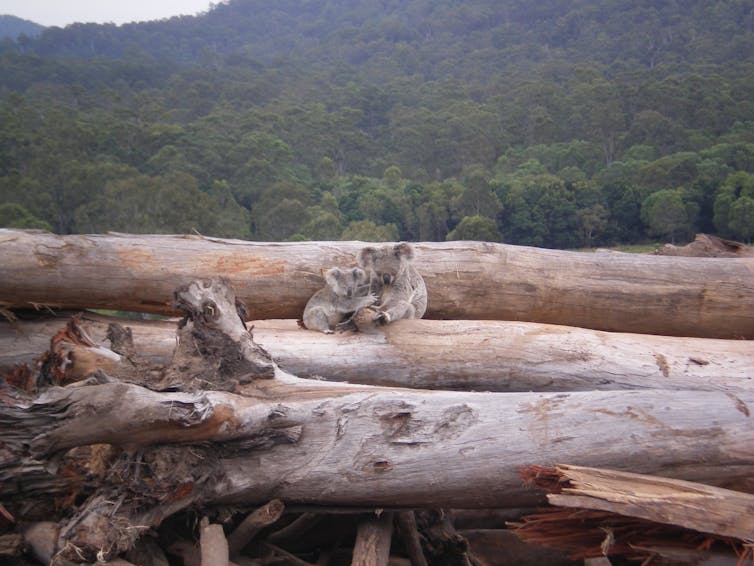
Another participant spoke of their sadness following bushfires in the Snowy Mountains fires of New South Wales:
This area is where I [spent] much of my youth, so it was really sad to see it perish. I felt like I was experiencing the same hurt that the environment (trees, wildlife) was – as my memories were embedded in that location.
This response reflects how nature can give people a sense of place and identity – and how damage to that environment can erode their wellbeing.
But grief can also emerge in anticipation of a loss that has not yet occurred. One visitor told us:
When I was little, I thought of the world as kind of guaranteed – it would always be there – and having that certainty taken away […] knowing that the world might not be survivable for a lot of people by the time I’m a grown-up – it’s grief, and anger, and fear of how much grief is still to come.
Anger and frustration towards the then-federal government were also prominent. Participants spoke of a “lack of leadership” and the “government’s inability to commit to a decent climate policy”. They also expressed frustration at “business profits being put ahead of environmental protection”.
Participants also said “it feels like we can’t do anything to stop [climate change]” and “anything we do try, and change is never going to be enough”.
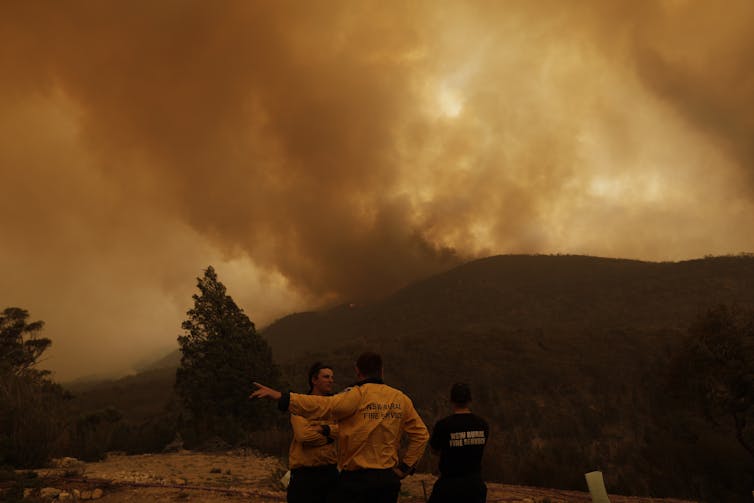
Healing Through Immersion In Nature
Emotions such as ecological grief and eco-anxiety are perfectly rational responses to environmental change. But we must engage with and process them if their transformative potential is to be realised.
There is increasing evidence of nature’s ability to help people sit with and process complex emotional states – improving their mood, and becoming happier and more satisfied with life.
Participants in our study described how being in natural areas such as Mount Barney helped them deal with heavy emotions triggered by nature’s demise.
Participants were variously “retreating to nature as much as possible”, “appreciating the bush more” and “spending as much time outside [so] that I can hear trees, plants, and animals”.
Participants explained how “being in nature is important to mental wellbeing”, is “healing and rejuvenating” and “always gives me a sense of spiritual coherence and connection with the natural world”.
For some, this rejuvenation is what’s needed to continue fighting. One participant said:
If we don’t see the places, we forget what we’re fighting for, and we’re more likely to get burned out trying to protect the world.
Similarly, one participant spoke of observing the resilience and healing of nature itself after devastation:
[I] find peace and some confidence in its [nature’s] ability to regenerate if given a chance.
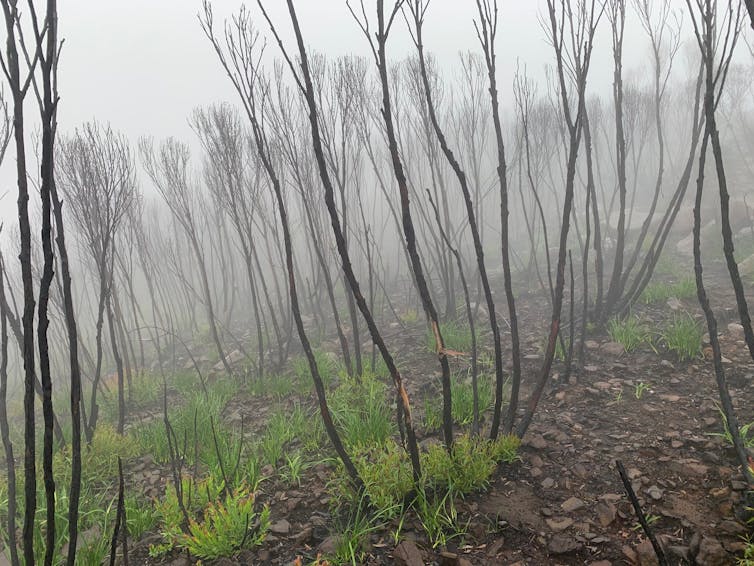
The Call Back To Nature
Our findings suggest immersing ourselves in nature more frequently will help us process emotions linked to ecological and climate breakdown – and thus find hope.
Eco-tourism sites promote opportunities for what’s known as eutierria – a powerful state that arises when one experiences a sense of oneness and symbiosis with Earth and her life-supporting systems.
Through this powerful state, it’s possible for one to undertake the courageous acts needed to advocate on behalf of nature. This is essential for the transformations Earth desperately needs.![]()
Ross Westoby, Research Fellow, Griffith University; Karen E McNamara, Associate professor, The University of Queensland, and Rachel Clissold, Researcher, The University of Queensland
This article is republished from The Conversation under a Creative Commons license. Read the original article.
Women are turning the tide on climate policy worldwide, and may launch a new era for Australia
Jacqueline Peel, The University of Melbourne; Annabelle Workman, The University of Melbourne; Kathryn Bowen, The University of Melbourne, and Rebekkah Markey-Towler, The University of MelbourneWhen the new federal parliament opened last week, a record number of female politicians took their seats: 38% in the House of Representatives and 57% in the Senate. This changing of the guard, with women at the forefront, brings an opportunity to accelerate Australia’s efforts on climate change.
The major parties were virtually silent on the issues of gender equity and climate change throughout the 2022 election campaign. Yet, both issues proved to be turning points for the Australian electorate.
Climate change – one of the key platforms on which the teal candidates successfully campaigned - is central to Prime Minister Anthony Albanese’s parliamentary agenda. A bill to enshrine a climate target into Australian law was among the first introduced to parliament last week.
Women are on the front line of climate change impacts, which makes our experiences and leadership critical at decision-making tables. From Barbados to Finland, we’ve seen women’s leadership on climate bring fair, innovative and ambitious policies. We hope a new era in Australian climate policy is upon us, too.
Women And Climate Change
Women around the world are disproportionately impacted by climate change due to existing systemic inequalities. For example in Africa, when disaster strikes, women may find it more difficult to evacuate their homes as primary caregivers, be unable to read written warnings, or be overlooked in rescue attempts in favour of men.
Australia’s experience is no exception. For example, researchers note sharp surges in domestic violence in the wake of disasters, such as bushfires.

Women also have a critical role to play in achieving ambitious and innovative climate action. As the Women’s Leadership statement at last year’s Glasgow climate summit noted:
Despite increased vulnerability to climate impacts, we recognise that women and girls have been creating and leading innovative climate solutions at all levels.
There are scores of examples of female climate leadership and the benefits that follow when women and girls are afforded the opportunity to take a lead on climate action, throughout recent history.
Notable examples include Christiana Figueres, who steered international climate negotiations to a successful outcome in 2015, with the adoption of the Paris Agreement.
Greta Thunberg’s vigil to sit outside the Swedish Parliament every Friday protesting inadequate climate action inspired a youth climate protest movement.
Other young women such as National Director of Seed Mob Amelia Telford in Australia, and Pacific Climate Warriors founding member Brianna Fruean are at the forefront of First Nations’ climate advocacy efforts.
An OECD Working Paper released this year notes that women’s participation in decision-making often leads to the development of comparatively strong and sustainable climate policies and goals.
Case in point, Finland, under leadership of progressive Prime Minister Sanna Marin, recently committed to one of the most ambitious climate targets, legislating net zero by 2035 and carbon negative by 2040.
Meanwhile, Barbados Prime Minister Mia Mottley aims to phase out fossil fuels by 2030 and is a passionate advocate for developing nations vulnerable to climate change.
In the private sector, women’s participation is also crucial. The OECD cites evidence that when women occupy at least 30% of board seats they bring about change to climate governance within companies.
An End To Australia’s Climate Wars?
The Australian government’s sharp focus on climate change is a far cry from the “climate wars” that have been a roadblock to meaningful climate policy in this country for the past decade.
But Australia wasn’t always a problem country in international climate negotiations. At times, we’ve been a climate leader.
Under Julia Gillard’s Labor government, for example, Australia was one of the first countries to introduce a national legislated carbon price in 2011. This changed in 2013, when the newly elected Prime Minister Tony Abbott swiftly repealed this landmark law. Almost a decade of inaction on climate change by the federal government followed.
Signs of progress on climate change began to take shape at the 2019 federal election, when conservative but green Independent MP Zali Steggall ousted Tony Abbott from his long-held seat of Warringah.
The May election then brought a teal wave of female independents, along with gains for Greens and Labor women candidates. These women – such as Kate Chaney, Zoe Daniels, Monique Ryan, Sophie Scamps, Kylea Tink, Zali Steggall and Allegra Spender – are set to play a transformative role in our politics and society.
They campaigned on a climate and integrity platform, calling for stronger 2030 climate targets, increased renewable energy generation and passing a Climate Change Act to legislate and lock in emissions reduction targets.
Labor’s Climate Change Bill was one of the first pieces of legislation to be introduced to the new parliament, and negotiations are now well underway between Labor, the Greens and the female independents to pass it.
An early success borne from these negotiations has been establishing that Labor’s current target – 43% emissions reduction by 2030 – is a floor, not a ceiling, for ambition.
Still, as Kate Chaney put it in her first speech, “we need to go further”. This includes addressing questions about accountability for achieving the target, and a mechanism to ensure future governments continue to lift their ambition.
Towards A Positive Climate Future
The success of the teal independents represents the enormous groundswell of anger and frustration felt by many people who might have, in the past, voted for the Coalition government.
This immense transformation points to the need for Australia to place gender equity, climate action and integrity at the centre of our decision-making.
As our national climate laws and policies take shape, we watch with anticipation to see how Albanese will navigate two houses occupied by women with strong, clear climate objectives and unprecedented support from their electorates.![]()
Jacqueline Peel, Director, Melbourne Climate Futures, The University of Melbourne; Annabelle Workman, Research Fellow, Melbourne Climate Futures, The University of Melbourne; Kathryn Bowen, Professor - Environment, Climate and Global Health at Melbourne Climate Futures and Melbourne School of Population and Global Health, University of Melbourne, The University of Melbourne, and Rebekkah Markey-Towler, PhD Candidate, Melbourne Law School, and Research fellow, Melbourne Climate Futures, The University of Melbourne
This article is republished from The Conversation under a Creative Commons license. Read the original article.
Solar is the cheapest power, and a literal light-bulb moment showed us we can cut costs and emissions even further

Recent extreme weather events have underscored the need to cut the CO₂ emissions that are driving up global temperatures. This requires a rapid transition of the energy economy to renewable energy sources, the cheapest being solar photovoltaics (PV). And our newly published research points to a way we can drive down costs of the shift even further using cheaper forms of silicon for highly efficient solar panels.
Australia has been leading the way with solar PV installations, but our solar energy journey is just beginning. This year, humanity hit a milestone of 1 terawatt (TW) – 1 million × 1 million watts – of installed solar capacity. However, experts predict 70TW of solar PV may be needed by 2050 to power all sectors of the economy.
To help drive this rapid uptake of solar PV, we need solar panels that are high efficiency and low cost. Over the past ten years, some new solar cell designs have led to record high efficiencies. The problem is these designs also need higher-quality materials, which cost more.
Our recent research suggests we might be able to rethink the type of silicon needed to make these high-efficiency solar cells.
Not All Silicon Is Equal
More than 95% of solar panels are made using silicon. The silicon used to make solar cells is similar to that used in computer chips. It’s effectively very pure sand.
To make a solar cell work, we need to form an electric field so the generated current can all flow in one direction. This is done by adding impurity atoms into silicon, a process known as “doping”.
In commercial panel manufacturing, the most commonly used type of silicon is “p-type” silicon. This material is doped with atoms that have one less electron than silicon, such as boron or more recently gallium.
We can then introduce a very thin layer on the surface full of atoms with one extra electron relative to silicon, which is called “n-type” silicon. Placing these two types of silicon together forms what is called a “p-n junction”. The massive difference in the number of electrons between the p-type region and n-type region forces electrons to move rapidly, creating an electric field that drives the current in our solar cell.
Conventional solar panels on Australian roofs today are overwhelmingly made using p-type silicon, as it is about 10% cheaper than the alternative “n-type” silicon, doped with phosphorus.
Higher Efficiency Comes At A Cost
Researchers are continually pushing to drive up the efficiency of solar panels so they can generate more power for consumers. In 2017, a record efficiency of 26.7% was achieved for a silicon solar cell. Last month, LONGi Solar announced an efficiency of 26.5% - very close to the world record - for the same type of solar cell made in a manufacturing environment, rather than in a laboratory.
This type of solar cell is called a “silicon heterojunction”. The special element of silicon heterojunction solar cells is that the surface is capped with a very thin layer – about 1,000 times thinner than a human hair – of amorphous silicon. This thin layer smooths the surface and reduces a lot of the energy losses.
Sanyo developed this cell design in the 1990s. At the time, high-quality n-type silicon wafers were used to make silicon heterojunction cells, even though these wafers are more expensive.
The main reason for this is that sunlight degrades cheaper p-type wafers. However, our understanding of this phenomenon and how to treat it has come a long way since the 1990s.
Our Light-Bulb Moment
For the past 30 years, all silicon heterojunction solar cells, including the record-breaking cells, have been made using n-type silicon wafers. In our research project, we wanted to test whether cheaper, p-type wafers could also be used.
Through comprehensive testing, we found heterojunction solar cells made with p-type silicon did not perform as well. We were puzzled by this. But one day we had a literal light-bulb moment.
We realised that accidental exposure to room lighting for as little as ten seconds before testing reduced the voltage of p-type cells by as much as 30mV, which can cut their efficiency by a percentage point (i.e. from 22% to 21%). This was causing our cells to perform much worse than expected. Much like someone who has severe allergies is more sensitive to pollen in the spring, we realised these high-efficiency silicon heterojunction solar cells made with p-type wafers are much more sensitive to light-induced degradation.
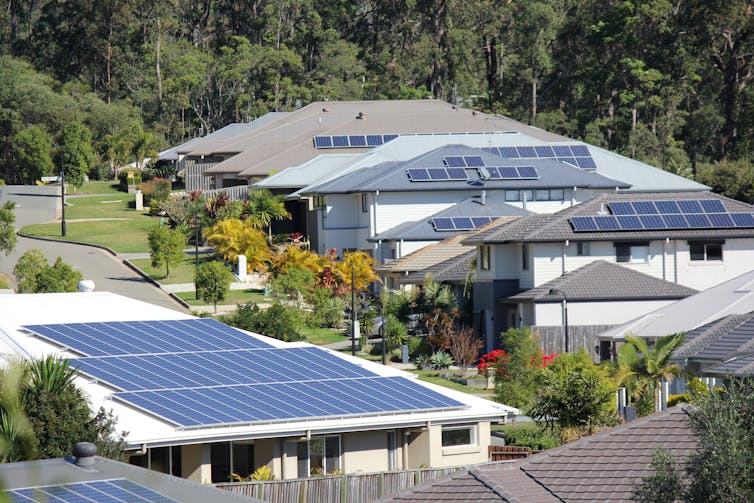
Problem Identified, We Now Have The Solution
We believe this observation is the reason high-efficiency cells have only previously been explored using expensive silicon. Past researchers were unaware of the sensitivity of p-type wafers to degrade and did not have the knowledge to overcome it.
Fortunately, we now know the bonding of boron and unwanted oxygen in the silicon wafer causes this degradation. Treatments with a high-intensity laser have been shown to stabilise cells in a matter of seconds.
The laser illumination can make hydrogen, which is already floating around in the silicon, more mobile to move around and “passivate” the unwanted boron-oxygen defects. Exactly how hydrogen does this is still an active area of research, but we know it solves the problem. Our research confirms a short laser treatment can stabilise the performance of p-type silicon heterojunction solar cells.
Armed with this new knowledge, we can further develop high-efficiency technologies with cheaper raw materials. This will reduce the cost of every watt of solar electricity produced. In March this year, solar panel manufacturer LONGi Solar announced an efficiency of 25.47% for a silicon heterojunction solar cell made using p-type wafers.
To see manufacturers making high-efficiency solar cells that are potentially cheaper means our findings have a tangible impact on industry. Reducing solar cell costs will provide cheaper electricity to millions of consumers while addressing climate change.![]()
Bruno Vicari Stefani, Postdoctoral Research Fellow, Solar Technologies, CSIRO; Brett Hallam, Associate professor, UNSW Sydney, and Matthew Wright, Postdoctoral Researcher in Photovoltaic Engineering, University of Oxford
This article is republished from The Conversation under a Creative Commons license. Read the original article.
Pittwater Reserves: Histories + Notes + Pictorial Walks
A History Of The Campaign For Preservation Of The Warriewood Escarpment by David Palmer OAM and Angus Gordon OAM
America Bay Track Walk - photos by Joe Mills
An Aquatic June: North Narrabeen - Turimetta - Collaroy photos by Joe Mills
Angophora Reserve Angophora Reserve Flowers Grand Old Tree Of Angophora Reserve Falls Back To The Earth - History page
Annie Wyatt Reserve - A Pictorial
Avalon's Village Green: Avalon Park Becomes Dunbar Park - Some History + Toongari Reserve and Catalpa Reserve
Bairne Walking Track Ku-Ring-Gai Chase NP by Kevin Murray
Bangalley Headland Bangalley Mid Winter
Banksias of Pittwater
Barrenjoey Boathouse In Governor Phillip Park Part Of Our Community For 75 Years: Photos From The Collection Of Russell Walton, Son Of Victor Walton
Barrenjoey Headland: Spring flowers
Barrenjoey Headland after fire
Bayview Baths
Bayview Wetlands
Beeby Park
Bilgola Beach
Botham Beach by Barbara Davies
Bungan Beach Bush Care
Careel Bay Saltmarsh plants
Careel Bay Birds
Careel Bay Clean Up day
Careel Bay Playing Fields History and Current
Careel Creek
Careel Creek - If you rebuild it they will come
Centre trail in Ku-ring-gai Chase National Park
Chiltern Track- Ingleside by Marita Macrae
Clareville Beach
Clareville/Long Beach Reserve + some History
Coastal Stability Series: Cabbage Tree Bay To Barrenjoey To Observation Point by John Illingsworth, Pittwater Pathways, and Dr. Peter Mitchell OAM
Cowan Track by Kevin Murray
Curl Curl To Freshwater Walk: October 2021 by Kevin Murray and Joe Mills
Currawong and Palm Beach Views - Winter 2018
Currawong-Mackerel-The Basin A Stroll In Early November 2021 - photos by Selena Griffith
Currawong State Park Currawong Beach + Currawong Creek
Deep Creek To Warriewood Walk photos by Joe Mills
Drone Gives A New View On Coastal Stability; Bungan: Bungan Headland To Newport Beach + Bilgola: North Newport Beach To Avalon + Bangalley: Avalon Headland To Palm Beach
Duck Holes: McCarrs Creek by Joe Mills
Dunbar Park - Some History + Toongari Reserve and Catalpa Reserve
Dundundra Falls Reserve: August 2020 photos by Selena Griffith - Listed in 1935
Elsie Track, Scotland Island
Elvina Track in Late Winter 2019 by Penny Gleen
Elvina Bay Walking Track: Spring 2020 photos by Joe Mills
Elvina Bay-Lovett Bay Loop Spring 2020 by Kevin Murray and Joe Mills
Fern Creek - Ingleside Escarpment To Warriewood Walk + Some History photos by Joe Mills
Iluka Park, Woorak Park, Pittwater Park, Sand Point Reserve, Snapperman Beach Reserve - Palm Beach: Some History
Ingleside
Ingleside Wildflowers August 2013
Irrawong - Ingleside Escarpment Trail Walk Spring 2020 photos by Joe Mills
Irrawong - Mullet Creek Restoration
Katandra Bushland Sanctuary - Ingleside
Lucinda Park, Palm Beach: Some History + 2022 Pictures
McCarrs Creek
McCarr's Creek to Church Point to Bayview Waterfront Path
McKay Reserve
Mona Vale Beach - A Stroll Along, Spring 2021 by Kevin Murray
Mona Vale Headland, Basin and Beach Restoration
Mount Murray Anderson Walking Track by Kevin Murray and Joe Mills
Mullet Creek
Narrabeen Creek
Narrabeen Lagoon Catchment: Past Notes Present Photos by Margaret Woods
Narrabeen Lagoon State Park
Narrabeen Lagoon State Park Expansion
Narrabeen Rockshelf Aquatic Reserve
Nerang Track, Terrey Hills by Bea Pierce
Newport Bushlink - the Crown of the Hill Linked Reserves
Newport Community Garden - Woolcott Reserve
Newport to Bilgola Bushlink 'From The Crown To The Sea' Paths: Founded In 1956 - A Tip and Quarry Becomes Green Space For People and Wildlife
Pittwater spring: waterbirds return to Wetlands
Pittwater's Lone Rangers - 120 Years of Ku-Ring-Gai Chase and the Men of Flowers Inspired by Eccleston Du Faur
Pittwater's Parallel Estuary - The Cowan 'Creek
Resolute Track at West Head by Kevin Murray
Resolute Track Stroll by Joe Mills
Riddle Reserve, Bayview
Salvation Loop Trail, Ku-Ring-Gai Chase National Park- Spring 2020 - by Selena Griffith
Seagull Pair At Turimetta Beach: Spring Is In The Air!
Stapleton Reserve
Stapleton Park Reserve In Spring 2020: An Urban Ark Of Plants Found Nowhere Else
The Chiltern Track
The Resolute Beach Loop Track At West Head In Ku-Ring-Gai Chase National Park by Kevin Murray
Towlers Bay Walking Track by Joe Mills
Trafalgar Square, Newport: A 'Commons' Park Dedicated By Private Landholders - The Green Heart Of This Community
Tranquil Turimetta Beach, April 2022 by Joe Mills
Turimetta Beach Reserve by Joe Mills, Bea Pierce and Lesley
Turimetta Beach Reserve: Old & New Images (by Kevin Murray) + Some History
Turimetta Headland
Warriewood Wetlands and Irrawong Reserve
Whale Beach Ocean Reserve: 'The Strand' - Some History On Another Great Protected Pittwater Reserve
Wilshire Park Palm Beach: Some History + Photos From May 2022
Winji Jimmi - Water Maze

New Shorebirds WingThing For Youngsters Available To Download
A Shorebirds WingThing educational brochure for kids (A5) helps children learn about shorebirds, their life and journey. The 2021 revised brochure version was published in February 2021 and is available now. You can download a file copy here.
If you would like a free print copy of this brochure, please send a self-addressed envelope with A$1.10 postage (or larger if you would like it unfolded) affixed to: BirdLife Australia, Shorebird WingThing Request, 2-05Shorebird WingThing/60 Leicester St, Carlton VIC 3053.

 Shorebird Identification Booklet
Shorebird Identification Booklet
The Migratory Shorebird Program has just released the third edition of its hugely popular Shorebird Identification Booklet. The team has thoroughly revised and updated this pocket-sized companion for all shorebird counters and interested birders, with lots of useful information on our most common shorebirds, key identification features, sighting distribution maps and short articles on some of BirdLife’s shorebird activities.
The booklet can be downloaded here in PDF file format: http://www.birdlife.org.au/documents/Shorebird_ID_Booklet_V3.pdf
Paper copies can be ordered as well, see http://www.birdlife.org.au/projects/shorebirds-2020/counter-resources for details.
Download BirdLife Australia's children’s education kit to help them learn more about our wading birdlife
Shorebirds are a group of wading birds that can be found feeding on swamps, tidal mudflats, estuaries, beaches and open country. For many people, shorebirds are just those brown birds feeding a long way out on the mud but they are actually a remarkably diverse collection of birds including stilts, sandpipers, snipe, curlews, godwits, plovers and oystercatchers. Each species is superbly adapted to suit its preferred habitat. The Red-necked Stint is as small as a sparrow, with relatively short legs and bill that it pecks food from the surface of the mud with, whereas the Eastern Curlew is over two feet long with a exceptionally long legs and a massively curved beak that it thrusts deep down into the mud to pull out crabs, worms and other creatures hidden below the surface.
Some shorebirds are fairly drab in plumage, especially when they are visiting Australia in their non-breeding season, but when they migrate to their Arctic nesting grounds, they develop a vibrant flush of bright colours to attract a mate. We have 37 types of shorebirds that annually migrate to Australia on some of the most lengthy and arduous journeys in the animal kingdom, but there are also 18 shorebirds that call Australia home all year round.
What all our shorebirds have in common—be they large or small, seasoned traveller or homebody, brightly coloured or in muted tones—is that each species needs adequate safe areas where they can successfully feed and breed.
The National Shorebird Monitoring Program is managed and supported by BirdLife Australia.
This project is supported by Glenelg Hopkins Catchment Management Authority and Hunter Local Land Services through funding from the Australian Government’s National Landcare Program. Funding from Helen Macpherson Smith Trust and Port Phillip Bay Fund is acknowledged.
The National Shorebird Monitoring Program is made possible with the help of over 1,600 volunteers working in coastal and inland habitats all over Australia.
The National Shorebird Monitoring program (started as the Shorebirds 2020 project initiated to re-invigorate monitoring around Australia) is raising awareness of how incredible shorebirds are, and actively engaging the community to participate in gathering information needed to conserve shorebirds.
In the short term, the destruction of tidal ecosystems will need to be stopped, and our program is designed to strengthen the case for protecting these important habitats.
In the long term, there will be a need to mitigate against the likely effects of climate change on a species that travels across the entire range of latitudes where impacts are likely.
The identification and protection of critical areas for shorebirds will need to continue in order to guard against the potential threats associated with habitats in close proximity to nearly half the human population.
Here in Australia, the place where these birds grow up and spend most of their lives, continued monitoring is necessary to inform the best management practice to maintain shorebird populations.
BirdLife Australia believe that we can help secure a brighter future for these remarkable birds by educating stakeholders, gathering information on how and why shorebird populations are changing, and working to grow the community of people who care about shorebirds.
To find out more visit: http://www.birdlife.org.au/projects/shorebirds-2020/shorebirds-2020-program
Aussie Bread Tags Collection Points

Technology Is Key To Transforming Systemic Deficiencies In Australia’s Aged Care Sector New Report Finds
.jpg?timestamp=1659674342414)
- Respect through the power of connection — Advances in technologies, such as machine learning interfaces, Wi-fi/ 5G and IoT (internet of things) should be better leveraged to revolutionise connection — between older Australians and their community, carers and aged care users, aged care spaces and those who rely on them.
- Digital first — Technology and digitisation offerings, such as automation of manual tasks, meeting of mandated quality standards and high-quality telehealth that can simultaneously serve care-based outcomes and organisational efficiency should be prioritised in the next phase of system reform.
- Secure and sophisticated digital infrastructure — While connection is key to respect, security and stability builds the trust needed in the system. Smart sensors connected devices and the entire internet of things should combine seamlessly to create ‘articulate spaces’, but with robust security and privacy features. Surveillance systems that track people anonymously can balance safety and privacy.
- New models and spaces for experimentation — Technology-rich experimentation spaces can catalyse next-level partnered prototyping, trialling, and exploration; where technologists or designers can partner with a community of researchers and industry professionals, or where in-situ simulations can inspire real-time ideation and inter-connected product development. New models and spaces for experimentation can be a game-changer.
- Smart sensors that can detect the risk of falls
- Technology that can detect behavioural risks, such as conflict in common areas
- Devices that can alert people of physical hazards, in real time
- Technology that alerts surface disruption and stalled behaviour (such as not eating a meal)
- Facial recognition and radio frequency identification technologies to assist with the automatic capturing of face-to-face care time
- Connecting digital worlds through telehealth, securely and independently
- And even a robotic dog, to perform typically manual tasks like deliveries
What allegations of Alzheimer’s research fraud mean for patients
John Mamo, Curtin UniversityAlzheimer’s disease is the most prevalent form of dementia and, with a rapidly ageing global population, it is fuelling unprecedented demand for costly patient care. There have been an estimated 400 clinical studies since the first Alzheimer’s drug trial in 1987.
The demand for treatment solutions however, is not without significant risk. There have been recent allegations that research underpinning widely held understandings of what causes Alzheimer’s may be fraudulent. The impact of this on clinical trials is a potentially huge blow for people living with Alzheimer’s and their carers.
In this case, it might be a stretch to say all Alzheimer’s research is now compromised. But the allegations can prompt us to interrogate whether the governing bodies of research and drug approvals are truly effective.
A Potentially Flawed Hypothesis
The concerns of possible Alzheimer’s research fraud follow findings by neurologist and physician Matthew Schrag, detailed in the journal Science.
Schrag wrote that an ongoing Alzheimer’s trial investigating the experimental drug simufilam was based on manipulated images published by scientists years earlier. If true, then volunteer patients to drug trials, including the simufilam studies, may be facing unnecessary health risks associated with experimental treatment – likely with no hope of clinical benefit.
Moreover, years of drug development costing tens of millions of dollars might have been wasted. The fundamental premise of what causes brain cell death in Alzheimer’s and by extension, what type of drugs are needed to be developed for treatment, may now need reconsideration.
Some contemporary Alzheimer’s clinical trials are based on a now potentially flawed hypothesis: that brain cell death is triggered by the early formation in the fluid that bathes the brain, of small clumps of protein called amyloid-oligomers.
One highly influential and highly cited study is at the centre of the current controversy. The authors claimed mouse models of Alzheimer’s showed memory impairment was associated with the accumulation of amyloid-oligomers. Schrag found compelling evidence the image presented in the 2006 paper may have been modified.

What About Peer Review Though?
The internationally adopted peer review system, where discipline experts anonymously review scientific data put forward for publication, usually ensures robust outcomes. This should reassure the public about a study’s scientific claims. However, as the saying goes, science doesn’t lie, but people may.
In this instance, Schrag reviewed scores of images in scientific papers authored by neuroscientist Sylvain Lesné and suggested significant image tampering had consistently occurred. Leading independent image analysts and internationally recognised Alzheimer’s researchers backed Schrag’s claims.
Neuroscientists can rightfully be exceedingly disappointed publications that changed what we know about Alzheimer’s or other diseases now appear based on manipulated data. It potentially brings neuroscientists into disrepute and undermines public confidence.
The allegations have brought trials for two drugs with simfilam under serious scrutiny.
It’s important to stress simufilam has not been approved by any regulatory agency. But a recent United States Food and Drug Administration (FDA) approval of the drug aducanumab – against expert advice which warned there wasn’t enough evidence to show it worked – has made physicians treating people living with Alzheimer’s extra sensitive.

Other Avenues Of Research
So does news of this potential fraud mean the field of Alzheimer’s research is corrupted? Can we be confident that what is prescribed to patients is safe and works?
We should keep in mind the broader context that publishing incorrect data is rare and research misconduct is even rarer. If incorrect data is identified, restorative practices are usually swift and comprehensive, including publishing “errata” corrections, or possibly, a retraction of findings by scientific journals. Significant penalties are also imposed for deliberate research misconduct.
Also, there are multiple clinical trials considering multiple aspects of the complex Alzheimer’s cascade from what causes the disease to how it affects memory and thinking. These are based on credible scientific findings.
Amyloid-oligomer clearance, which is now being questioned, is only one avenue that scientists have pursued.
The overwhelming majority of scientists are doing the right thing all of the time and if regulatory approval authorities such as our Therapeutic Goods Administration and the FDA continue to sensibly and thoroughly examine the evidence provided for approval, then we can hope for a better future for people living with Alzheimer’s. ![]()
John Mamo, John Curtin Distinguished Professor of Health Sciences, Director, Curtin Health Innovation Research Institute, Curtin University
This article is republished from The Conversation under a Creative Commons license. Read the original article.
‘This is not a barbeque’: a short history of neckties in the Australian parliament and at work
Lorinda Cramer, Australian Catholic UniversityThe question of what counts as professional dress for Australia’s politicians loomed large again this week.
New Greens MP Max Chandler-Mather rose to speak in question time. He wore a neat navy suit and a crisp cotton shirt, intending to pose a question about social housing.
But his shirt was unbuttoned at the neck, and a real problem – as Nationals MP Pat Conaghan saw it – was the fact that Chandler-Mather wore no tie.
“I suppose I shouldn’t be surprised the Coalition care more about ties than people waiting years for social housing,” Chandler-Mather wrote on Twitter.
The member for Griffith’s apparent affront to professional dress is the latest in a string of debates around what those leading the country wear.
But what exactly should our politicians wear, does it really matter, and is it time to accept “the tie is dead”?
Dressed For Australian Politics
Speaker Milton Dick let Max Chandler-Mather’s tie-free ensemble pass.
Although Australia’s male MPs generally wear ties in the chamber, the House of Representatives Practice (the definitive guide to procedure and practice) says dress “is a matter for the individual judgement of each Member”.
The opening of the first Commonwealth Parliament in 1901 was a lavish affair. As the Argus reported it, men decked themselves out in their finest formal wear, in “sombre shades” of mourning for Queen Victoria, “softened by splashes of purple here and there”. The scarlet uniforms of governors and officers provided a “touch of brightness”.

In 1977, safari suits – expressly made to be worn without a tie – were ruled as acceptable to wear in the chamber.
And few could forget the pink shorts famously worn by South Australian Premier Don Dunstan in 1972. Dunstan sparked a media frenzy when he turned up at Adelaide’s Parliament House, the bold bright colouring of his shorts set off with a fitted white t-shirt and long white socks worn to his knees.
Five years earlier, Dunstan’s casual clothing had been photographed for the Bulletin as a “summertime example” for employees in government departments, with the article predicting the tie was “slowly but reluctantly on the way out”.
When the Bulletin named Australia’s best- and worst-dressed men in 1976, flamboyant federal politician Al Grassby received the worst-dressed title. Dunstan topped the best-dressed list.
Known for wearing bold, unconventional suits against the grey uniformity of his colleagues, the Bulletin likened Grassby to “something out of Guys and Dolls”. Others appreciated his irrepressible style: his purple suit, worn while being sworn in to parliament, or his loud patterned ties.
From 1983, federal MPs have been encouraged to dress with “neatness, cleanliness and decency”, as former Speaker Harry Jenkins put it.
Loosening The (Global) Ties
Last year, Māori MP Rawiri Waititi was ejected from the debating chamber of the New Zealand Parliament for refusing to wear a tie.
Evocatively describing it as a “colonial noose”, Waititi insisted the hei tiki greenstone pendant he wore at his neck represented a necktie for him, while tying him to his people, culture and Māori rights.
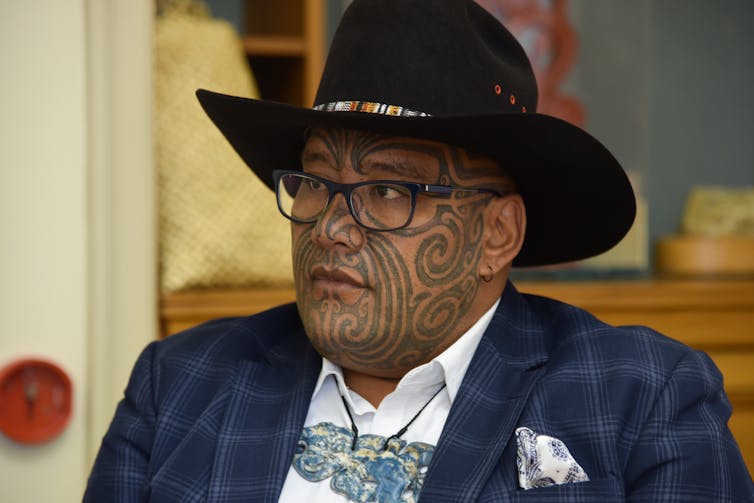
Fierce debate followed. Were ties shorthand for masculinity, status or oppression? Ties were subsequently removed from “appropriate business attire” in the New Zealand Parliament.
Last week, Spanish Prime Minister Pedro Sanchez fronted the media without neckwear. He encouraged his ministers and other workers to ditch their ties to save energy running air-conditioning in the searing summer heat.

Staying Smart With Easing Dress Standards
“This is not a barbeque,” Conaghan insisted to justify his objection this week.
Conaghan’s comment, likely unintentionally, echoed one made in the press 100 years ago.
In 1922, Fred Wright wrote to the editor of Sydney’s Daily Telegraph. He worried about what constituted smart, professional work attire when some suggested it was time for standards to ease.
Wright outlined the challenges faced by young men who were expected to “look respectable” by their employers, but who knew going without collars and ties was considered unbusinesslike.
“A young man cannot come to work dressed as if he were going to a picnic,” Wright explained.

Fewer men donned suits and ties for the office in years to follow, reflecting these shifting standards. This had to do with the Australian climate as much as the availability of new items of dress. Sportswear and separates looked smart, menswear experts assured, although some still held up the suit and tie as the pinnacle of power and professionalism.
Despite Conaghan’s objections, Australian men have been going tie-less while still looking professional for decades. And most politicians are alert to clothing’s rich potential to communicate a range of other messages: through a high-vis vest and hard hat, or a North Face jacket.
Should we hold our politicians to high sartorial standards – or just let them get on with the job?![]()
Lorinda Cramer, Postdoctoral Research Associate, Australian Catholic University
This article is republished from The Conversation under a Creative Commons license. Read the original article.
First Bill Passed Delivers Aged Care Reforms
Expansion Of Quality Indicators In Aged Care
- an additional 4 quality indicators for residential aged care
- up to 5 quality indicators for in-home aged care
Dementia Support Australia Is Excited To Announce Our New Program - Staying At Home
‘Ask Annie’ body language tips released to enhance dementia workforce skills
You Don’t Need An Accountant To Understand Aged Care Costs

- statements
- basic daily fees and charges
- hardship applications
- moving into residential care, and
- changing between packages.
Don’t fall for the snake oil claims of ‘structured water’. A chemist explains why it’s nonsense

Is there a “fourth phase of water”? From time to time you might see people talking up the health benefits of so-called hexagonal water, or structured water, or exclusion-zone (EZ) water.
A few weeks ago Kourtney Kardashian’s Poosh website was spruiking a US$2,500 “structured water filter”. Last weekend even Australia’s Sydney Morning Herald got in on the act, running a now-deleted story on the virtues of “structured water”.
So what’s going on?
As a professor of chemistry, I can tell you “EZ water” is nonsense. But let’s talk about what it’s supposed to be, and how it’s supposed to work.
What Is EZ Water?
EZ water has its origins in observations by Gerald Pollack, a professor of bioengineering at the University of Washington. He was studying the behaviour of water near “hydrophilic” surfaces, which are made of materials with a very strong attraction to water.
Pollack found that water pushes away objects such as plastic microspheres, salt and even dye molecules from the region close to a very hydrophilic surface.
Pollack’s explanation for this behaviour is that the structure of water changes in the “exclusion zone”.
While water molecules are made of two hydrogen atoms and one oxygen atom (with the familiar formula H₂O), Pollack believes EZ water has an extra hydrogen atom and an extra oxygen atom (formula H₃O₂). This change supposedly results in a negative electric charge and a layered hexagonal network arrangement of atoms in the water.
Hydrophilic surfaces exists in the cells of the human bodies, so some have argued EZ water is “more natural” than ordinary water, and therefore must have manifold health benefits.
Tenuous Health Claims
The now-deleted Sydney Morning Herald article interviewed a supposed expert in water structure science called Rob Gourlay.
He makes many common claims for structured water: it is more natural, it has negative electric charge, it flows into our cells more quickly than ordinary water, and has many other supposed health benefits.
Though the article failed to mention it, a quick search reveals Robert Gourlay’s job title as “chief scientist” of a company called Phi’on, which sells water structuring devices.
From The Plausible To The Preposterous
Let’s have a look at these claims. Some of them are plausible, while some are preposterous.
We know that water behaves differently near an interface with another substance, because it is no longer only interacting with other water molecules. Surface tension is a familiar example of this phenomenon.
We also know that water behaves differently if it is confined in a very small space, on a scale of billionths of a metre.
As such, there is no special reason to be immediately sceptical of Pollack’s experimental findings about the behaviour of water in the “exclusion zone”. They are indeed interesting, and many aspects have been reproduced.
But Pollack’s explanations for the behaviour have no basis.
Follow The Atoms
If water somehow changed into a H₃O₂ form, simple arithmetic shows that turning two molecules of H₂O into one of H₃O₂ would leave an extra hydrogen atom floating around.
We would expect to see this hydrogen released as H₂ gas. Alternatively, the reaction would need to bring in extra oxygen from the air. A simple experiment would show that neither of these happen.
EZ water, for all its interesting properties, cannot be anything but H₂O. Pollack does not propose the H₃O₂ structure in a peer-reviewed publication, and other explanations have been put forth to explain his published experimental findings.
And the hexagonal structure for H₃O₂ which Pollack proposes, if stable and rigid, would not flow like a liquid.
Water Has No Memory
But suppose water in the exclusion zone did have some special structure. Could it be bottled and keep its properties?
All signs point to no.
In water with a neutral pH (neither acidic nor alkaline), about one molecule in every billion has an extra hydrogen atom that has jumped across from another molecule. This creates one positively charged H₃O+ ion and one negatively charged OH– ion.
The extra protons (H+) that make H₃O+ ions are highly mobile – they rapidly leap from one molecule to another. This happens so fast that each of the hydrogen atoms in a given water molecule is replaced 1,000 times each second.
There are also short-lived attractions between the oxygen atoms in one molecule and the hydrogen atoms in a neighbouring molecule called “hydrogen bonds”. In liquid water at room temperature these bonds only last millionths of a millionth of a second.
The rapid movement of hydrogen atoms, and the flickering on and off of hydrogen bonds, mean that any structure in EZ water would dissipate very quickly. In bulk, water has forgotten its neighbours within picoseconds and has switched its hydrogen atoms in milliseconds. This is why it is liquid.
Experiments using intense laser pulses to disrupt the structure of water also show that it recovers within picoseconds. So any bulk water structure that is different from the usual kind that flows from our taps does not last much longer than a few millionths of a millionth of a second.
Water Is Water
So what does it all add up to? Put simply, it is not possible to buy any other type of water than regular water. You can change the pH, you can change the dissolved ions and gases, but not the water itself.
The snake-oil merchants selling structured water products use scientific-sounding words that are generally meaningless and are at best based on misinterpretations and abuses of Pollack’s experiments.
Pollack distances himself from most companies selling structured water products. He has his own structured water company, which among other products sells a “filterless water filter”.![]()
Timothy Schmidt, Professor of Chemistry, UNSW Sydney
This article is republished from The Conversation under a Creative Commons license. Read the original article.
Written In Stone: A 240 Million Year Old Mass Breeding Event
Published by Pittwater Pathways, August 4, 2022
Paul Cronk’s discovery of fossil trackways at Turimetta indicates a mass breeding event took place there about 240 million years ago. In this video scientists from the Australian Museum and Macquarie University are examining the fossils. Their discussion and reasoning makes a fascinating record of the scientific process in action.
Lachlan Hart is a vertebrate palaeontologist currently undertaking his PhD at the University of New South Wales and the Australian Museum. His research focuses on the evolution, systematics and palaeobiology of Mesozoic tetrapods, including temnospondyl amphibians, crocodyliformes and dinosaurs. Lachlan is particularly interested in exploring what can be learnt about extinct animals from studying their living descendants
Dr Patrick Smith is a taxonomist and biostratigrapher researching the Cambrian and Ordovician of Australia and New Zealand. He primarily has worked on fossil arthropods (trilobites and their close relatives). However, he's also occasionally worked on other fossil groups, including brachiopods, gastropods and echinoderms. Patrick is particularly interested in using fossils as key time markers to correlate sequences of rocks on a regional, national, and global scale.
Prof Glenn Brock, palaeobiologist, Macquarie University.
My research activities focus on elucidating the evolution, phylogeny, biodiversity, ecology and biostratigraphy of the earliest (stem group) bilaterian animals that arose during the Cambrian Explosion. My work focuses on studying exceptionally preserved macro- and microfossils from a variety of localities in Australasia and Antarctica. I am particularly interested in the phylogenetic, ecological and biostratigraphic significance of early Cambrian "Small Shelly Fossils" (SSF).
Dr Peter Mitchell OAM is one of Australia’s most respected and experienced geomorphologists.
Be The Boss: I Want To Be A Gardener
Those who have taken on a simple lawn-mowing run will know this is in-demand work that pays well and allows you autonomy. Once you undertake further studies you can also expand your self-employment to gardening and choose to do something more in the vast field that is suited to your interest - Horticulturalists and Landscape Gardeners or Greenkeeping are just a few of the associated career fields.
Gardeners plant, care for and maintain lawns, shrubs, trees and flowers. They look after the landscaping and structural elements of the garden and often design gardens or outdoor spaces.
Work is in private gardens at people's homes, at commercial locations or in public parks and gardens.
This career is suitable for people with an affinity for nature and working the land. Knowledge of plant species and the conditions required for each to thrive is important.
Day-to-day tasks:
- prepare and maintain seed and garden beds
- propagate and plant trees, bushes, hedges, flowers and bulbs
- plant grass and lay turf
- maintain grassed areas through weeding, trimming, fertilising, watering and mowing
- prune trees and hedges
- attend to landscaped and paved areas such walls, fences, gravel, pergolas, ponds, barbecues and garden furniture
- examine trees to assess their condition and determine treatment
- shape branches using chain or handsaws
- spray plants and trees to control insects and disease.
Considerations: Physically demanding, Requires driving, Working outdoors.
Formal qualifications are not required, however vocational education and training (VET) courses in horticulture can improve employment prospects. Find a Diploma or Certificate in Horticulture
Architect and Landscape Architect
Architects and Landscape Architects design commercial, industrial, institutional, residential and recreational buildings and landscapes.
Day-to-day tasks:
- obtaining advice from clients and management to determine type, style and size of planned buildings and alterations to existing buildings
- providing information regarding designs, materials and estimated building times
- preparing project documentation, including sketches and scale drawings, and integrating structural, mechanical and aesthetic elements in final designs
- writing specifications and contract documents for use by builders and calling tenders on behalf of clients
- consulting with Professionals and clients about external area designs, costs and construction
- compiling and analysing site and community data about geographical and ecological features, landforms, soils, vegetation, site hydrology, visual characteristics and human-made structures, to formulate land use and development recommendations, and for preparing environmental impact statements
- preparing reports, site plans, working drawings, specifications and cost estimates for land development, showing location and details of proposals, including ground modelling, structures, vegetation and access
- inspecting construction work in progress to ensure compliance with plans, specifications and quality standards.
You usually need a bachelor degree in architectural design or landscape architecture to work as an Architect or Landscape Architect. It is also common to complete postgraduate studies. Find a Bachelor of Landscape Architectural Design
Greenkeeper
Greenkeepers establish and maintain fine turf, grassed areas and synthetic surfaces used for sporting events.
Day-to-day tasks;
- preparing seedbeds for new turf
- establishing and maintaining turf by watering, over sowing or over seeding, and repairing green damage
- mowing, rolling and levelling turf
- pegging and marking out lines and logos, installing nets, posts and stumps, and placing other sports equipment on playing areas
- operating and maintaining hand and power driven equipment such as mowers, aerators, cultivators, corers and line marking equipment
- constructing cricket wickets, tennis courts, and bowling, croquet and golf greens
- replanting, repairing, aerating, fertilising and top dressing lawns
- installing and maintaining synthetic surfaces
- may maintain buildings, fences and surrounding gardens.
You can work as a Greenkeeper without formal qualifications, however, a certificate II, III or IV in sports turf management, horticulture or another related field may be useful. Take a Diploma of Golf Management. Take a Diploma of Sports Turf Management
Nurseryperson
Nurserypersons propagate and cultivate trees, shrubs, and ornamental and flowering plants in plant nurseries.
Day-to-day tasks;
- preparing potting media and containers before planting
- selecting seeds, bulbs and cuttings, and planting them in beds, lawn areas and tubs
- budding and grafting vegetative material onto root stock
- watering plants manually and controlling automatic watering operations
- applying pesticides to control pests, diseases, weeds and nutritional and environmental plant disorders
- keeping records of soil mixtures, plantings, treatments, losses and yields
- selecting plants and packaging them for presentation and delivery
- advising customers on plant care and appropriate plants for local conditions
- may plan sales area layouts and visual merchandise presentation.
You can work as a Nurseryperson without formal qualifications, however, a certificate III or IV in retail nursery, production nursery, horticulture or agriculture may be useful.
Find a Certificate in Nursery Production or Retail
Gardener as a job information courtesy Australian Government Apprenticeships Guide (Your Career), Australian Open Colleges and The Good Universities Guide, Australia.
Also Available
Art Competition To Remember Our ANZACS
Word Of The Week: Virtue
noun
1. behaviour showing high moral standards. conformity to a standard of right: morality. :a particular moral excellence. 2. beneficial quality or power of a thing. 3. manly strength or courage: valor. 4. a commendable quality or trait: merit. 4. (in traditional Christian angelology) the seventh-highest order of the ninefold celestial hierarchy.. 5. Archaic: virginity or chastity, especially of a woman.
From Middle English: from Old French vertu, from Latin virtus ‘valour, merit, moral perfection’, from vir ‘man’. The ancient Romans used the Latin word virtus (derived from vir, their word for man) to refer to all of the "excellent qualities of men, including physical strength, valorous conduct, and moral rectitude." The French words vertu and virtu came from this Latin root. In the 13th century, the word virtue was "borrowed into English".
virtue signalling: the action or practice of publicly expressing opinions or sentiments intended to demonstrate one's good character or the moral correctness of one's position on a particular issue. "Virtue signalling", according to the Cambridge Dictionary, is "an attempt to show other people that you are a good person, for example by expressing opinions that will be acceptable to them, especially on social media".
B. D. McClay wrote in The Hedgehog Review that signalling particularly flourished in online communities; It was unavoidable in digital interactions because they lacked the qualities of offline life, such as spontaneity. When one filled out a list of one's favourite books for Facebook(or other lists/or anything on other platforms), one was usually aware of what that list said about oneself.
The expression is often used to imply that the virtue being signalled is exaggerated or insincere in other forms; one example often cited as virtue signalling is "greenwashing" (a compound word modelled on "whitewash"), when a company deceptively claims that its products or policies are more environmentally friendly than, in fact, they actually are.
Platonic virtue - The four classic cardinal virtues are:
- Prudence (φρόνησις, phrónēsis; Latin: prudentia; also Wisdom, Sophia, sapientia), the ability to discern the appropriate course of action to be taken in a given situation at the appropriate time.
- Fortitude (ἀνδρεία, andreía; Latin: fortitudo): also termed courage, forbearance, strength, endurance, and the ability to confront fear, uncertainty, and intimidation.
- Temperance (σωφροσύνη, sōphrosýnē; Latin: temperantia): also known as restraint, the practice of self-control, abstention, discretion, and moderation tempering the appetition. Plato considered Sōphrosynē, which may also be translated as sound-mindedness, to be the most important virtue.
- Justice (δικαιοσύνη, dikaiosýnē; Latin: iustitia): also considered as fairness; the Greek word also having the meaning righteousness.
This enumeration is traced to Greek philosophy and was listed by Plato in addition to piety: ὁσιότης (hosiotēs), with the exception that wisdom replaced prudence as virtue. Some scholars consider either of the above four virtue combinations as mutually reducible and therefore not cardinal.
Other examples of this include the concept of merit in Asian traditions as well as De (Chinese), Buddhism's four brahmavihara ("Divine States") can be regarded as virtues in the European sense, as well as other examples across the globe in all societies and religions. For example, in Jainism, attainment of enlightenment is possible only if the seeker possesses certain virtues. All Jains are supposed to take up the five vows of ahimsa (non violence), satya (truthfulness), asteya (non stealing), aparigraha (non attachment) and brahmacharya (celibacy) before becoming a monk. Other virtues which are to be followed by both monks as well as laypersons include forgiveness, humility, self-restraint and straightforwardness.
Compare Virtual: The adjective virtual is used to describe something that exists in essence but not in actuality. 1. almost or nearly as described, but not completely or according to strict definition. 2. Computing; not physically existing as such but made by software to appear to do so.
The first records of the word virtual come from around 1400. It comes from the Medieval Latin virtuālis, meaning “effective” (in the sense of having the effect of something without the form or appearance of it).
Jesse McCartney - Beautiful Soul (September 14, 2014)
The Master's Apprentices - It's Because I Love You (March 1971)
Richard Clapton - Capricorn Dancer (1977)
Connecting With Harmony: Emma Baylin - TEDxWarrington
Published July 30, 2022
NOTE FROM TED: This talk only represents the speaker's personal views and understanding of music and physiology. TEDx events are independently organized by volunteers. The guidelines we give TEDx organizers are described in more detail here: http://storage.ted.com/tedx/manuals/t...
How can music help us create connection? How can finding your voice help you find yourself? In this talk, Emma explores the impact of creative practices to help you reach your full potential and a harmony you never imagined possible.
Video production by Prism Studios, Warrington www.prism-studios.co.uk In 2013, Emma founded Shared Harmonies CIC, a not-for-profit organisation specialising in creative development services for companies and communities, with the aim of improving connection, confidence and wellbeing through inspirational singing.
Shared Harmonies helps organisations explore leadership, team work and wellbeing, guiding participants through an experiential journey, applying learning to their own practice and developing clear actions. All profits are reinvested to support health and wellbeing community programmes, including COPD, mental health, cancer, Parkinson’s and dementia.
During the pandemic, Emma expanded Shared Harmonies by developing creative ways to reach more people that needed support, connecting hundreds through co-producing songs. They won awards and came runner-up in the Song for Yorkshire competition. Emma was awarded a Prime Minister’s Point of Light Award for services to communities and was invited to become a Fellow of the Royal Society for the Arts. This talk was given at a TEDx event using the TED conference format but independently organized by a local community. Learn more at https://www.ted.com/tedx
Archie Roach: the great songman, tender and humble, who gave our people a voice
Bhiamie Williamson, Australian National UniversityAboriginal and Torres Strait Islander readers are advised this article contains names and images of deceased people. Archie Roach’s family have given permission for his name and image to be shared.
I am not sure of the first time I heard Archie Roach’s music.
Like most Aboriginal people born during or after the 1980s, we grew up listening to the person we affectionately called Uncle Archie. But there was one song that spoke to me from the first moment I heard it: From Paradise.
The song tells the story of a young girl who was taken away from her Country, the river lands, part of the stolen generations.
While his songs will play loud and long into the future, beneath his music Uncle Archie gave us something else, something deeply profound but mostly invisible.
He gave us – and all of Australia – an image of an Aboriginal man, tender and humble. An image long denied us.
Our Greatest Storyteller
The passing of Archie Roach has hit us – Aboriginal and Torres Strait Islander people – like the first crack of thunder after dark clouds descend.
You know it’s coming, but it shocks you still.
Uncle Archie gave voice, a story, to the experiences of so many of our people. His song Took the Children Away gave shape to a suffering so deep and profound. “This story’s right, this story’s true,” he sang.
These cathartic melodies continue to offer us healing.
His catalogue of music spans distances and experiences difficult to grasp. Uncle Archie’s gift was to write and bring to life through the strum of his guitar, the stories so familiar to us all.
His success took our stories to the nation, and the world.
To describe him simply as a musician fails to recognise him as a messenger. His music reaches through darkness like the beam of a lighthouse, offering guidance and safe harbour in times of despair.
Through his life and love of music, Uncle Archie became our greatest storyteller.
The Father And Mentor
The music of Uncle Archie came from a place of suffering. Taken away as a child, being homeless, a drunk, locked up, learning of the death of family through whispers and letters, grief was his constant companion.
Through this time, he found Ruby Hunter. They would have two sons, Amos and Eban. Uncle Archie and Aunty Ruby, with their kids, shared a life of love, laughter and song. My personal favourite song, Down City Streets, was written by Aunty Ruby.
Uncle Archie has supported hundreds of young Aboriginal and Torres Strait Islander artists and inspired countless more through his foundation.
For decades Uncle Archie worked in youth detention centres, talking with young people who found themselves in hardship. He offered guidance and mentorship to young Aboriginal and Torres Strait Island people, illuminating a road through the difficulties of life, often the result of colonisation and racism.
He carefully navigated these spaces, acknowledging that while many young Aboriginal people, and especially boys, are born into a world that has been built to suppress them, they possess an inner strength stemming from culture and community.
Emu Man
Through his life, his dedication to Aunty Ruby, his devotion to his sons, his work with disengaged youth and his profound love for his people, Uncle Archie gave the nation an image of an Aboriginal man seldom found in the national psyche.
Images of the violent abuser, the drunk, the criminal, the absent father, or a combination of these, saturate our print media and television news bulletins. Even positive representations of Aboriginal men – the warrior, the sports star – exudes a sense of toughness and candour.
Rare, almost unheard of, are the stories of Aboriginal men as sensitive, soft, loving and vulnerable people.
Yet it is these qualities my research has revealed are most valued by our people.
The notion of “Emu Men” has emerged throughout my PhD.
Male emus are the primary carer for their chicks. The male partner will sit on the nest and the father rears the babies.
This notion of manhood and fatherhood – someone dedicated to his family, who has a primary responsibility to ensure the safety of his children and their passage through the world – appears to be deeply entwined in many of our peoples’ customs and cultures.
In Uncle Archie, we find the most profound sense of this alternate masculinity.
His songs will live on forever. But he also gifted us this alternate image of an Aboriginal man: someone soft, tender, loving, vulnerable, generous, resilient. Someone profoundly strong and with an inner wisdom, who sat on his nest and looked after his family and young people experiencing hardship.
It will take time to come to terms with this loss.
To his family we offer our hearts and hold you in our spirit.
This great songman gave our people a voice and a way to understand what has happened to us. He gave so much to a nation that treated him so badly.
As for me, like many others, Uncle Archie’s music and concerts has offered companionship through major life events. My wife and I danced to Love in the Morning on our wedding day.
And as for From Paradise, from the first moment I heard this song I thought he wrote it about my grandmother who was taken away and sent to Palm Island.
It is difficult to put words to this loss – Uncle Archie was always the one with the words.
Thank you for everything Uncle. May you soar with the eagles.
Aunty Ruby be happy to see you. ![]()
Bhiamie Williamson, Research Associate & PhD Candidate, Australian National University
This article is republished from The Conversation under a Creative Commons license. Read the original article.
Meteors seem to be raining down on New Zealand, but why are some bright green?
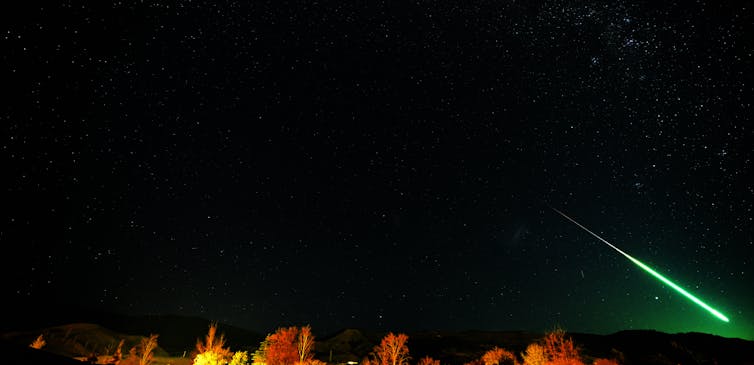
New Zealand may seem to be under meteor bombardment at the moment. After a huge meteor exploded above the sea near Wellington on July 7, creating a sonic boom that could be heard across the bottom of the South Island, a smaller fireball was captured two weeks later above Canterbury.
Fireballs Aotearoa, a collaboration between astronomers and citizen scientists which aims to recover freshly fallen meteorites, has received a lot of questions about these events. One of the most frequent is about the bright green colour, and whether it is the same green produced by auroras.
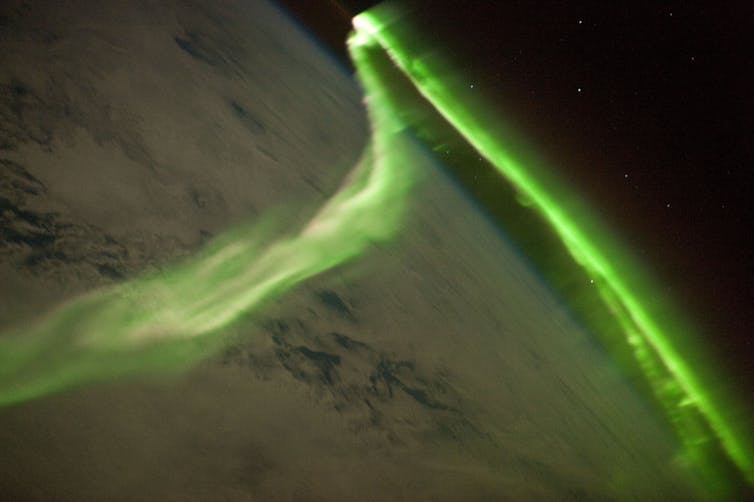
Green fireballs have been reported and filmed in New Zealand regularly. Bright meteors often signal the arrival of a chunk of asteroid, which can be anywhere between a few centimetres to a metre in diameter when it comes crashing through the atmosphere.
Some of these asteroids contain nickel and iron and they hit the atmosphere at speeds of up to 60km per second. This releases an enormous amount of heat very quickly, and the vapourised iron and nickel radiate green light.
But is this the same as the bright green of an aurora? For the most recent meteor, the answer is mainly no, but it’s actually not that simple.
The Colours Of A Meteor Trail
The green glow of the aurora is caused by oxygen ions in the upper atmosphere, created by collisions between atmospheric oxygen molecules and particles ejected by the sun.
These oxygen ions recombine with electrons to produce oxygen atoms, but the electrons can persist in an excited state for several seconds. In an energy transition known as “forbidden” because it does not obey the usual quantum rules, they then radiate the auroral green light at 557nm wavelength.
A meteor can also shine by this route, but only if it’s extremely fast. Very fast meteors heat up in the thin atmosphere above 100km where auroras form.
If you want to see a green auroral wake from a meteor, watch out for the Perseid meteor shower, which has now started and will peak on August 13 in the southern hemisphere.
Also arriving at about 60km per second, the Perseids are extremely fast bits of the comet Swift-Tuttle. Some Perseids trail a beautiful, glowing and distinctly green wake behind them, particularly at the start of their path.
Once the Canterbury meteor hit on July 22, the capricious winds of the upper atmosphere twisted the gently glowing trail, resulting in a pale yellow glow towards the end (as seen in the GIF below, also recorded by Greg Price for an earlier meteor). This is caused by sodium atoms being continually excited in a catalytic reaction involving ozone.

Are We Being Bombarded By Meteors?
Yes and no. The arrival of big, booming green meteors and the dropping of meteorites isn’t rare in New Zealand, but it is rare to recover the rock. Fireballs Aotearoa is working to improve the recovery rate.
In an average year, perhaps four meteorites hit New Zealand. We’re encouraging citizen scientists to build their own meteor camera systems so they can catch these events.
By comparing the meteor against the starry background and triangulating images caught by multiple cameras, we can pin down the meteor’s position in the atmosphere to within tens of metres.

Not only does that help us find the rock, but it tells us what the pre-impact orbit of the meteoroid was, which in turn tells us which part of the solar system it came from. This is a rather efficient way of sampling the solar system without ever having to launch a space mission.

Fireballs Aotearoa is rapidly populating Otago with meteor cameras and there are half a dozen more in other parts of the South Island. The North Island isn’t well covered yet, and we’re keen for more people (in either island) to build or buy a meteor camera and keep it pointed at the sky.
Then next time a bright meteor explodes with a boom above New Zealand, we may be able to pick up the meteorite and do some good science with it.
Many thanks for the input from Jim Rowe of the UK Fireball Alliance, and Greg Price who photographed the July 22 meteor and the persistent train.![]()
Jack Baggaley, Professor Emeritus Physics and Astronomy, University of Canterbury
This article is republished from The Conversation under a Creative Commons license. Read the original article.
It’s Beyoncé’s world. We’re just living in it
Phoebe Macrossan, University of the Sunshine CoastAs Rolling Stone wrote last month, “for at least the past decade, Beyoncé Giselle Knowles-Carter has been the world’s greatest living entertainer.”
The African-American pop star has reached single-name fame status like other mega pop stars Madonna, Cher, Britney and Adele.
Her long-standing and extremely successful career within girl group Destiny’s Child (1990-2006) and as a solo artist (2003-present) has been filled with pop cultural “moments” and record-breaking releases.
As I have written elsewhere, Beyoncé’s stardom is an interesting form of world-building. World-building, or “worlding”, is the ongoing construction and maintenance of stardom by creating an intimate, identifiable, holistic world around the star – not just a singular star image.
The audience is in on Beyoncé’s world-building the same way we watch a film. We know it is “made-up” but we want to believe it’s real – or at least go along with it for the ride.
Beyoncé World
Our obsession with celebrity is centred around the “search” for the “authentic” person behind the manufactured persona in pop videos.
The Beyoncé (2013) visual album was a sign of the increasing personal intimacy of Beyoncé’s stardom, and her transition to the active creation and ownership of an intimate, identifiable and holistic world.
“Beyoncé World” is created and maintained primarily through Beyoncé’s music videos and visual albums, but also across her concerts, performances and public appearances, and her social media accounts and website.
Other contemporary pop stars construct an “authentic” star image through sharing intimate details of their lives via social media or semi-autobiographical albums and music videos.
But Beyonce’s social media posts are notoriously curated and tight-lipped about her private life.
She rarely posts captions and favours fashion photoshoot images of herself rather than “authentic” makeup free selfies (although she wrote a long caption to launch the Renaissance album – a rarity).
Lemonade (2016) was Beyoncé’s most personal album. It addressed the infidelities of her husband, rapper and music mogul Jay-Z, as well as her own personal outrage at racial injustices in the United States.
Beyoncé World is not the messy, no-makeup selfies or confession videos of other stars. It is a more curated, high fashion, high art, high concept world for fans to participate in.
Taking Care Of The Beyhive
Beyoncé’s work always makes a splash but her seventh solo album, Renaissance, leaked online 36 hours before its scheduled release. Fans in France were able to buy CD versions two days before its scheduled release.
But Beyoncé has such a loyal fanbase some of her die-hard fans (called the “Beyhive”) thought it was blasphemous to listen earlier than Queen B had intended, posting instructions on social media to wait it out.
If it’s Beyoncé’s world, you need to play by Beyoncé’s rules, and the Beyhive are a key cornerstone of maintaining these rules.
Being “in the know” about specific visual and musical references the star makes (in every single output) helps fans enter into the world-building process - and they certainly want to interpret her art the way she intended it.
Her past two solo albums were both surprises: the internet-breaking digital drop Beyoncé, and the politically charged celebration of Black women in Lemonade. (She also directed, wrote and produced the film/visual album and celebration of Black Excellence, Black is King in 2020, to accompany The Lion King remake.)
Renaissance has received more of a traditional marketing buildup.
The lead single, Break My Soul, was released on June 21, and the full tracklist and album cover were posted on her Instagram before the album’s release.
While she has been teasing the album’s imagery for months, some were hoping for a visual album – or a music video for every song on the album – like her two previous solo releases.
Beyoncé has yet to release any music videos for Renaissance, other than lyric-only videos. This either means the star is about to release a Renaissance visual album or has bigger plans for a longer music film project.
Renaissance Woman
Renaissance is Beyoncé’s first solo album in more than five years, and her first fully dance album.
A large part of her success is due to her ability to constantly reinvent herself and her music, borrowing from all genres and collaborating with a range of hit-makers and unusual musical artists.
Renaissance covers numerous genres, referencing many musical touchstones and pays an important homage to African-American dance music creators and LGBTQI+ dancehall culture.
The album includes nods to 1970s disco queen Donna Summer and New Orleans bounce-music icon Big Freedia, as well as a collaboration with Grace Jones on the track Move.
Renaissance traverses disco, funk, techno, hip-hop, house, dancehall, Afrobeats and ballroom. Aside from Jones, Beyoncé has worked with a wide range of collaborators including Drake, The-Dream, Honey Dijon, Skrillex, Syd, Hit-Boy, Mike Dean and A.G. Cook, among others.
While Renaissance celebrates diversity in dance music, the star has been called out for using an ableist slur in the song Heated, and has now announced she will remove the lyric. It might be Beyonce’s world, but that doesn’t mean she won’t listen to her fans.
Lemonade came out during a time of great political upheaval in America and directly addressed the Black Lives Matter movement. Renaissance is less overtly political and more a celebration of a post-pandemic opportunity to hit the dance floor. She hopes it inspires fans to “release the wiggle”.
Beyoncé World is not just created by the star and her team, but also by fans connecting the dots between her social media, her website, Renaissance and their own real world.
They’ll know not to take this album too seriously, and to imagine themselves on the dancefloor with Queen B.![]()
Phoebe Macrossan, Lecturer in Screen Media, University of the Sunshine Coast
This article is republished from The Conversation under a Creative Commons license. Read the original article.
What is an Acknowledgement of Country and how is it different to a Welcome to Country?
Cally Jetta, University of Southern QueenslandPauline Hanson’s recent dramatic outburst and walkout from parliament as an Acknowledgement of Country was delivered has been condemned as racist and ignorant.
Social media sites reporting this incident have attracted a barrage of negative comments perpetuating misconceptions around Acknowledgement of Country and Welcome to Country. Many clearly do not understand what they are and see them as “special treatment”. Unfortunately, Hanson has been a source of this line of thinking around so-called “special treatment”, as seen in her 1996 maiden speech to parliament.
Such comments reveal an Australian society still burdened with an unfounded resentment and fear of Aboriginal rights and connection to Country.
So, what is an Acknowledgement of Country? How is it different to a Welcome to Country?
What Is An Acknowledgement Of Country?
An Acknowledgement of Country is often made at the start of an event to pay respect to First Nations peoples as the Traditional Owners and ongoing custodians of the land.
An Acknowledgement often highlights the unique position of First Nations people in the context of culture and history, and their intimate relationship with the land.
An Acknowledgement does not exclude anyone. Anyone can deliver one. It costs nothing to give or listen to. You lose nothing from a ten second acknowledgement of the Country, language, and people that existed in a place for tens of thousands of years.
An Acknowledgement does not impact on the rights and status of other Australian people.
What Is A Welcome To Country?
Acknowledgement of Country is different to a Welcome to Country. Crucially, only Traditional Owners can deliver a Welcome to Country.
Traditionally, First Nations people travelling to different Country had to seek permission to enter from the Traditional Owners. If granted, permission was given by way of a Welcome to Country.
Today, inviting an Elder to perform a Welcome is a way to recognise unceded Aboriginal sovereignty of ancestral lands. It’s also a way to honour ancient and continuing First Nations customs.
Wurundjeri Elder Joy Murphy Wandin has described Welcome to Country as practised by her people:
When there was a request to visit Country, the Werrigerri (a young man selected by the Elders of the community) would go on behalf of the community under the voice of the Elder, the Nurungeeta. There would be this negotiation and that could take a long time, it could take months. So that is the background of Welcome to Country. It is not a new thing. It is not because our land was dispossessed; it has nothing to do with that. It is all about respect for our culture and who we are. It is paying respect, especially to our ancestors.
Acknowledgements and Welcomes to Country weren’t invented to divide First Nations and non-Indigenous people.
Although both have been widely revived in recent years, they are traditional protocols. When Aboriginal peoples travel from their own home Country to that of another Aboriginal group, they too acknowledge the traditional custodians.
Similarly, it’s standard practice for a hosting First Nations group to perform a welcome to all visitors – Indigenous and non-Indigenous alike – as a way of being inclusive and welcoming.
In doing this, Aboriginal people are sharing their culture and social protocols and offering the opportunity to feel a deeper connection to the lands you walk upon and visit.
By learning traditional place names, you unlock important information about the character or features of that place.
Restoring And Maintaining Connection To Country
Many Aboriginal people have been removed from Country, or can no longer access it through development, private ownership, farming and mining.
The Stolen Generations and mission era systematically worked to eradicate Aboriginal languages and cultural traditions. For many First Nations peoples, Acknowledgement of Country can help to restore some of this severed connection to Country and identity.
As Professor Mick Dodson explains:
For us, Country is a word for all the values, places, resources, stories, and cultural obligations associated with that area and its features. It describes the entirety of our ancestral domains. While they may all no longer necessarily be the titleholders to land, Aboriginal and Torres Strait Islander Australians are still connected to the Country of their ancestors and most consider themselves the custodians or caretakers of their land.
For some Aboriginal people, Acknowledgement of Country is a constant reminder of the responsibilities of custodians to advocate for the protection of a fragile environment and its cultural heritage.
It reminds us all Aboriginal languages were the first languages spoken in this country. Many are are still spoken. Acknowledgement of Country brings us together and recognises the shared cultural history and landscape we have all inherited.
Joy Murphy Wandin, describes it as:
a very important way of giving Aboriginal people back their place in society, and an opportunity for us to say, “We are real, we are here, and today we welcome you to our land”. It’s paying respect, in a formal sense, and following the traditional custom in a symbolic way.
Understanding what Acknowledgement of Country and Welcome to Country are, and their history and origins can help us recognise the importance and power of continuing these practices.
It’s not about being divisive. It’s about continuing ancient connections to Country, history, and ancestors. It’s a reminder of the responsibility of custodians to the land and its creatures; to protect and look after them.
It’s about honouring and being respectful towards a custom and way of thought much older than the name or concept of “Australia” as a nation state, or any sitting of parliament.![]()
Cally Jetta, Course examiner and lecturer; College for First Nations, University of Southern Queensland
This article is republished from The Conversation under a Creative Commons license. Read the original article.
Hidden women of history: Kudnarto, the Kaurna woman who made South Australian legal history
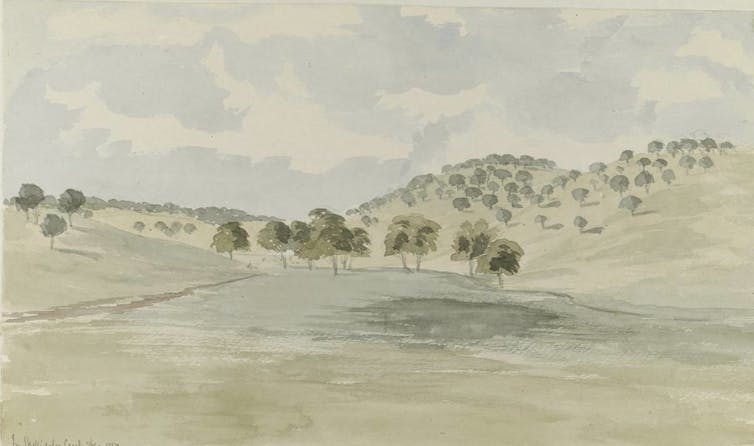
Kudnarto, a Kaurna woman, married shepherd Thomas Adams on 27 January 1848. Theirs was the first legal marriage between an Aboriginal woman and a colonist under colonial law in South Australia.
The occasion was recorded by The South Australian. The bride, who took the name Mary Ann Adams, wore
a neat gown and low boots. She wore no bonnet, but her hair was carefully dressed; and her whole appearance denoted cleanliness and comfort.
She was deemed “remarkedly good looking”, hardworking and well-tempered. Her English as she repeated her vows was clear.
Kudnarto was able to apply for Aboriginal reserve land for farming purposes under colonial law, so after their marriage Thomas put in an application for land on Skylogolee (Skillogalee) Creek, near Auburn in the Clare Valley.
In May 1848, Kudnarto (now Mary Ann Adams) acquired a license to occupy this land during her lifetime. This marriage set a precedent for other colonists to apply for Aboriginal reserve land on marrying an Aboriginal woman.
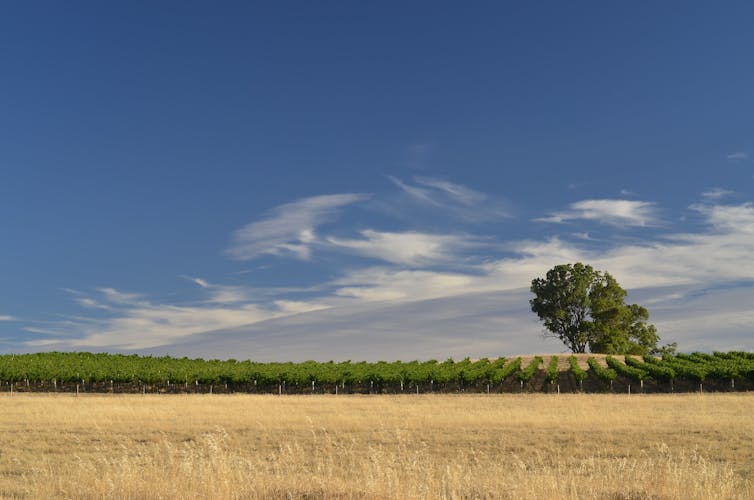
Who Was Kudnarto?
Who was Kudnarto, this woman who made legal history? Unfortunately we know very little about her, other than a couple of newspaper reports and her husband’s attempts to secure the land he occupied in her name.
Her life is also remembered in a memoir, And the Clock Struck Thirteen, by her great-great grandson, Lewis Yerloburka O'Brien.
She was a Kaurna woman from the area around Crystal Brook, the northernmost region of Kaurna land, which extended across the Adelaide Plains to Fleurieu Peninsula in the south.
All that we know of Kudnarto’s Aboriginal family is that her name indicates she was the third-born child. Her father was probably a Ngadjuri man: the one written record of this is in the journal of anthropologist Norman Tindale. Lewis O'Brien says, “I’ve always known, however, that we’ve got Ngadjuri connections because everyone in the family used to talk about them.”
Kudnarto’s descendants include many prominent Kaurna community members, including Gladys Elphick, best known as the founding president of the Council of Aboriginal Women of South Australia, the first Aboriginal women’s body to be formed in Australia – as well as Josie Agius, one of South Australia’s first Aboriginal health workers, and AFL footballer Michael O'Loughlin.
A Historic Marriage
Kudnarto had spent her childhood on a settler’s property, where she gained some European education. As a young teenager she met Adams, 20 years her senior, and began living with him.
After they had lived together for about 18 months, Adams gave notice to the Deputy Registrar’s Office that he wished to marry Kudnarto. But first they needed the approval of the Protector of Aborigines, Matthew Moorhouse.
He visited Kudnarto several times to find out if she was fond of Adams and wanted to marry him. Moorhouse also instructed her on her marital obligations under British law.
He reported to the Colonial Secretary that “she likes him better than the black men” and gave his approval for the marriage, subject to the authorisation of the Lieutenant Governor for the marriage of an underage girl, which was immediately forthcoming.
The local newspaper reported on the upcoming nuptials in an ironically disparaging tone, giving us one of the few descriptions of Kudnarto, a personable woman: her “fidelity, amiability of disposition, and aptitude to learn, are very remarkable, if not unprecedented.”
There was one last hurdle to overcome: it was a condition of the marriage that Kudnarto go to the Aboriginal school in Adelaide, to be trained in domestic duties and build on the education she had already received.
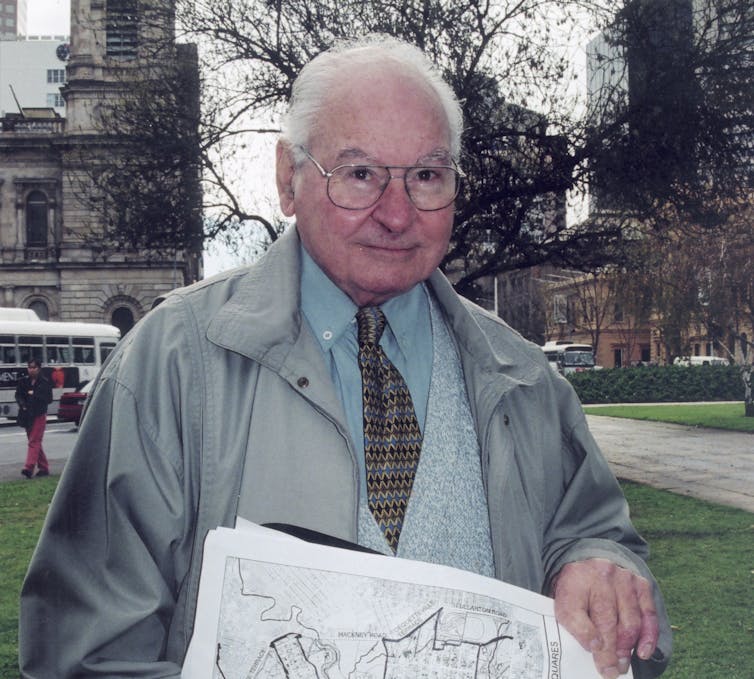
Kudnarto’s Land
Since the inception of the colony, sections of land in South Australia had been set aside as Aboriginal reserves, where it was anticipated Aboriginal people would farm the land. But there were continual pressures on the government to make the land available for colonists and many were leased out to them.
After the wedding, Adams wrote to the Protector of Aborigines, Moorhouse, requesting access to some of this land. His application was approved and sent on to Governor Robe. Moorhouse emphasised that he was representing Adams’ wife’s interests:
I would therefore respectfully ask on her behalf, that she may be allowed to settle on the Section in the Skylogolee Creek and have His Excellency promise that she be allowed to remain there so long as she lives upon the Section.
The Adams struggled to establish a farming enterprise. Thomas seems to have been a heavy drinker, with little training or experience managing property and he feared local people would shun him. Was he shunned because of his drinking, poverty or his Aboriginal wife?
After the birth of his first son Thomas (junior) in 1849, Adams wanted to find out whether Kudnarto’s children would inherit the land when she died. He was told that the original conditions for access to the land were to protect Kudnarto from desertion by her husband “with the understanding that there might be a renewal in favour of her children in case of her death”.
A second son, Tim, was born in 1852. Kudnarto, taught her sons “as much as she could” before she died.
We have very little subsequent information about Kudnarto. Her husband did illegally lease out the land while he sought work on other properties, but we do not know if Kudnarto and the children went with him, or where they lived.
Lewis O'Brien suggests
Kudnarto was still getting used to living in new circumstances without her family around and no game to hunt nearby. She had to live in the confines of a house with all these strangers passing across her land - it would have been difficult for her.
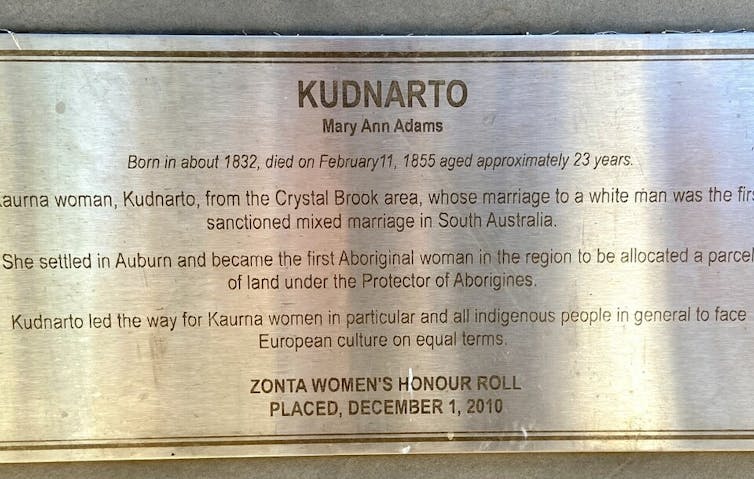
Witnesses To Murder
In August 1850, Kudnarto and Thomas Adams were called as witnesses in a murder trial. As in the reports of her marriage, Kudnarto was treated as a test case for “civilising the natives”. Her appearance and demeanour were of note. Describing her clothes and hair, it’s reported that “she certainly appeared to considerable advantage”. She spoke clearly, although “in the idiom of her tribe” and her emotional responses to the crime were noted.
Kudnarto died on 11 February 1855, in her early 20s. Adams and his sons lost the right to occupy the land at Skylogolee Creek. Adams could not look after his children and took them to Poonindie mission on southern Eyre Peninsula, where they lived for the next few decades.
Both Thomas Adams senior and junior continued to make claim to the land on Skillogalee Creek. But their many applications were unsuccessful, despite those early promises that Kudnarto’s children might have rights to the land.
Lewis O'Brien reflects:
how many times do we have to own this country before we can say it’s ours? We’re the original owners. My great, great grandmother was given back a piece of her land, only for it to be taken away again from her family when she died.
Peggy Brock, Emeritus Professor of History, School of Arts and Humanities, Edith Cowan University
This article is republished from The Conversation under a Creative Commons license. Read the original article.
Space debris is coming down more frequently. What are the chances it could hit someone or damage property?
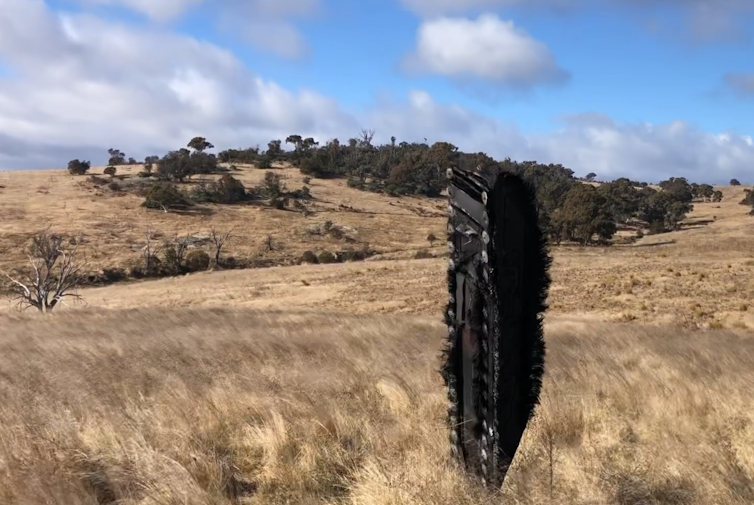
In the past week alone, we’ve seen two separate incidents of space debris hurtling back to Earth in unexpected places.
On Saturday there was the uncontrolled re-entry of a Chinese Long March 5B rocket over Malaysia. Yesterday outlets reported on some spacecraft parts that turned up in regional New South Wales – now confirmed to be from a SpaceX Crew-1 mission.
As the space industry grows, it’s safe to say such incidents will only become more frequent – and they could pose a risk. But how much of a risk, exactly?

Chunks Of Metal Hurtling Towards Us
Space debris refers to the leftover components of a space system that are no longer required. It might be a satellite that has reached the end of its life (such as the International Space Station), or parts of a rocket system that have fulfilled their purpose and are discarded.
To date, China has launched three Long March 5B rockets, and each has been deliberately left in an uncontrolled orbit. This means there was no way of knowing where they would land.
As for the SpaceX debris found in the Snowy Mountains, SpaceX de-orbits its rocket parts in a controlled fashion, and designs other components to burn up upon re-entry into Earth’s atmosphere. But as you can see from the latest news, these things don’t always go to plan.
So how dangerous is space debris, really?
Well, as far as we know only one person has ever been hit by it. Lottie Williams, a resident of Tulsa, Oklahoma, was struck by a piece in 1997. It was about the size of her hand and thought to have come from a Delta II rocket. She picked it up, took it home and reported it to authorities the next day.
However, with more and more objects going into space, and coming back down, the chances of someone or something being struck are increasing. This is especially true of large, uncontrolled objects such as the Long March 5B.
Of the three times this model of rocket has been launched:
- the first re-entered on May 11 2020, with components landing on an African village
- the second re-entered on May 9 2021, near the Maldives
- the third re-entered on Saturday over Indonesia and Malaysia, with debris landing around these islands.
So Should I Be Worried?
There are many different estimates of the chances of space debris hitting someone, but most are in the one-in-10,000 range. This is the chance of any person being hit, anywhere in the world. However, the chances of a particular person being hit (such as you or me) is in the order of one in a trillion.
There are several factors behind these estimates, but let’s just focus on one key one for now. The image below shows the orbital path the recent Long March 5B-Y3 rocket followed for its final 24 hours (different objects take different orbital paths), as well as its re-entry location marked in red.
As you can see, the rocket orbits above land for a substantial amount of time.
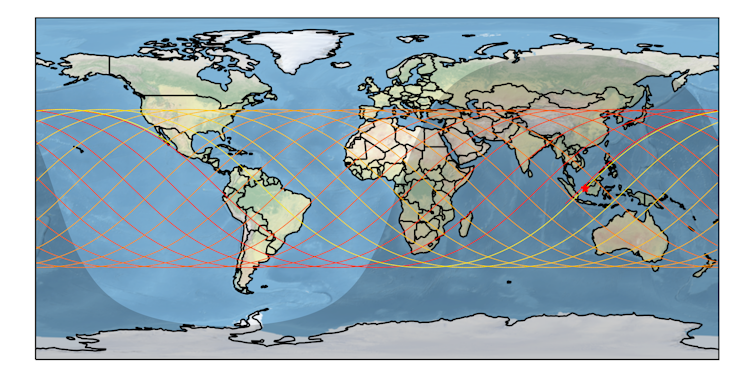
Specifically, in these orbits the vehicle spends about 20% of its time over land. A broad estimate tells us 20% of land is inhabited, which means there is a 4% chance of the Long March 5B re-entry occurring over an inhabited area.
This may seem pretty high. But when you consider how much “inhabited land” is actually covered by people, the likelihood of injury or death becomes significantly less.
The chance of damage to property, on the other hand, is higher. It could be as high as 1% for any given re-entry of the Long March 5B.
Also, the overall risk posed by space debris will increase with the sheer number of objects being launched and re-entering the atmosphere. Current plans of companies and space agencies around the world involve many, many more launches.
China’s Tiangong Space Station is due to be finished by the end of the year. And South Korea recently became the seventh country to launch a satellite payload heavier than one tonne – with plans to expand its space sector (along with Japan, Russia, India and United Arab Emirates).
It’s highly likely the chances of being hit are only going to go up (but will hopefully remain very small).
How Can We Be Prepared?
Two questions come to mind:
- can we predict debris re-entries?
- what can we do to reduce risk?
Let’s start with predictions. It can be extremely challenging to predict where an object in an uncontrolled orbit will re-enter Earth’s atmosphere. The general rule of thumb says uncertainty of the estimated re-entry time will be between 10% and 20% of the remaining orbital time.
This means an object with a predicted re-entry time in ten hours will have an uncertainty margin of about one hour. So if an object is orbiting Earth every 60-90 minutes, it could enter pretty much anywhere.
Improving on this uncertainty margin is a big challenge and will require significant amounts of research. Even then, it’s unlikely we’ll be able to predict an object’s re-entry location more accurately than within a 1,000km range.
Ways To Reduce Risk
Reducing risk is a challenge, but there are a couple of options.
First, all objects launched into an Earth orbit should have a plan for safe de-orbiting into an unpopulated area. This is usually the SPOUA (South Pacific Ocean Uninhabited Area) – also known as the “spacecraft cemetery”.
There’s also the option to carefully design components so they completely disintegrate upon re-entry. If everything burns up when it hits the upper atmosphere, there will no longer be a significant risk.
There are already some guidelines requiring space debris risk minimisation, such as the United Nations guidelines for the Long-term Sustainability of Outer Space Activities – but the mechanisms for these aren’t specified.
Moreover, how do these guidelines apply internationally, and who can enforce them? Such questions remain unanswered.
In summary, should you be concerned about being hit by space debris? For now, no. Is further research on space debris important for the future? Absolutely.![]()
Fabian Zander, Senior Research Fellow in Aerospace Engineering, University of Southern Queensland
This article is republished from The Conversation under a Creative Commons license. Read the original article.
It’s hard to challenge someone’s false beliefs because their ideas come from social networks, not facts

Most people think they acquire their beliefs using a high standard of objectivity.
But recent arguments between people about issues like trans rights, vaccinations or Roe v. Wade point to a different reality.
Consider the U.S. Supreme Court decision to overturn Roe v. Wade. There is plenty of evidence to show that widely accessible abortions lead to safer outcomes for children and people who can become pregnant. Moreover, data suggests abortion bans are ineffective, harmful and dangerous. A commitment to life, then, should favour comprehensive health care for those who can become pregnant — including abortions. It seems like there is a disconnect: People are not having fact-informed arguments.
The World Is Hyperspecialized
There is a reason facts are quickly lost in contentious arguments: individual people do not have the resources to deeply understand complex social issues. This is, in part, because the world in which we live is hyperspecialized. This means all reliable information is produced thanks to vast, interconnected fields of study. Humans have divided cognitive labour so we can know much more collectively than we can individually.
For example, the structural integrity of a bridge or the inner-workings of a cell phone are things the collective “we” understands better together.
But this feature of human knowledge is our downfall when it comes to the persistence of socially erroneous beliefs.
During arguments about social issues between those with differing opinions, one person often ends up insisting that if the other were only rational and could see the evidence, they would change their mind.

Socially problematic or false beliefs include things like racist, homophobic, transphobic and misogynstic ideas. These ideas can lead to significant, negative social consequences, especially for those belonging to marginalized communities.
False beliefs are pervasive in part because of the collective nature of human knowledge. As individuals, we can’t assess every issue since they require specialized knowledge. And while some may argue “do your own research,” individuals don’t necessarily have access to the best avenues to conduct fair research. Not only that, many would rather stick to their own set of beliefs.
Finding Someone Trustworthy
Due to the sheer volume of information that is relevant to any given social issue, people have developed psychological shortcuts — or heuristics — to point them in the right direction. These shortcuts have little to do with evidence and much more to do with evaluating who we can trust.
Perhaps unsurprisingly, the extent to which we find a person trustworthy is calibrated according to our social communities. We naturally associate with people who share our values: psychological processes encourage us to acquire values from our communities, and we tend to seek out like-minded individuals.
Our social communities radically determine who we see as trustworthy. Our social groups determine our political attitudes, obscure which evidence will count as meaningful and moderate the extent to which most people evaluate how their beliefs correspond to what experts say.

The people already in our communities will appear to be the most knowledgeable — even if they have no expertise or understanding and even when they are perpetuating false beliefs.
While it might seem like accurate beliefs are easily acquired, people are not quite so adept when it comes to determining what is true, nor are they equipped to determine who the appropriate experts are.
Problematic beliefs persist because our psychological and social circumstances don’t situate us appropriately to evaluate issues. This is partly why reasoning alone won’t change people’s minds.
Problematic beliefs are so appealing, then, because they’re easy.
From the perspective of a person living in a community committed to socially problematic beliefs, there is almost always more “trustworthy evidence” from someone they know.
Instead of complacent acceptance of misinformed beliefs, we need institutional moves to cultivate trust between experts and the public.
Perhaps more importantly, we need to cultivate a shared commitment to recognizing the humanity in others. Arriving at a problematic belief is easy, but building a better world requires authentic relationships and coalitions across community lines.![]()
Lara Millman, PhD Student, Philosophy, Dalhousie University
This article is republished from The Conversation under a Creative Commons license. Read the original article.
LNG Exporters Must Divert Gas To The Domestic Market To Avoid Shortfalls: ACCC
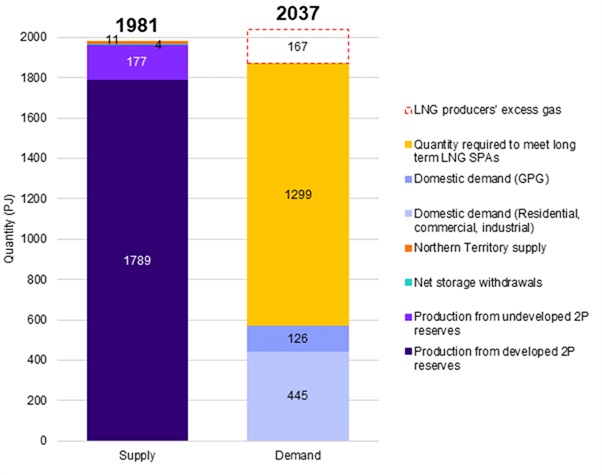
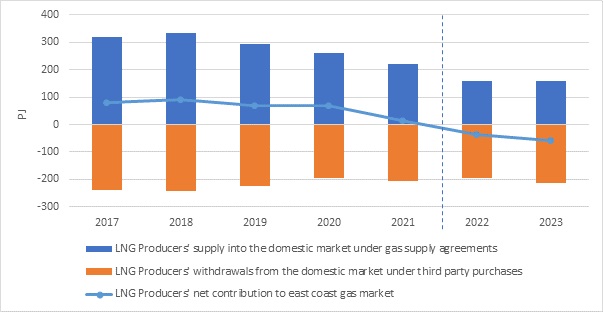
New Study Provides Greater Insight Into Australians Living With Younger Onset Dementia
First Global Map Of Cargo Ship Pollution Reveals Effects Of Fuel Regulations

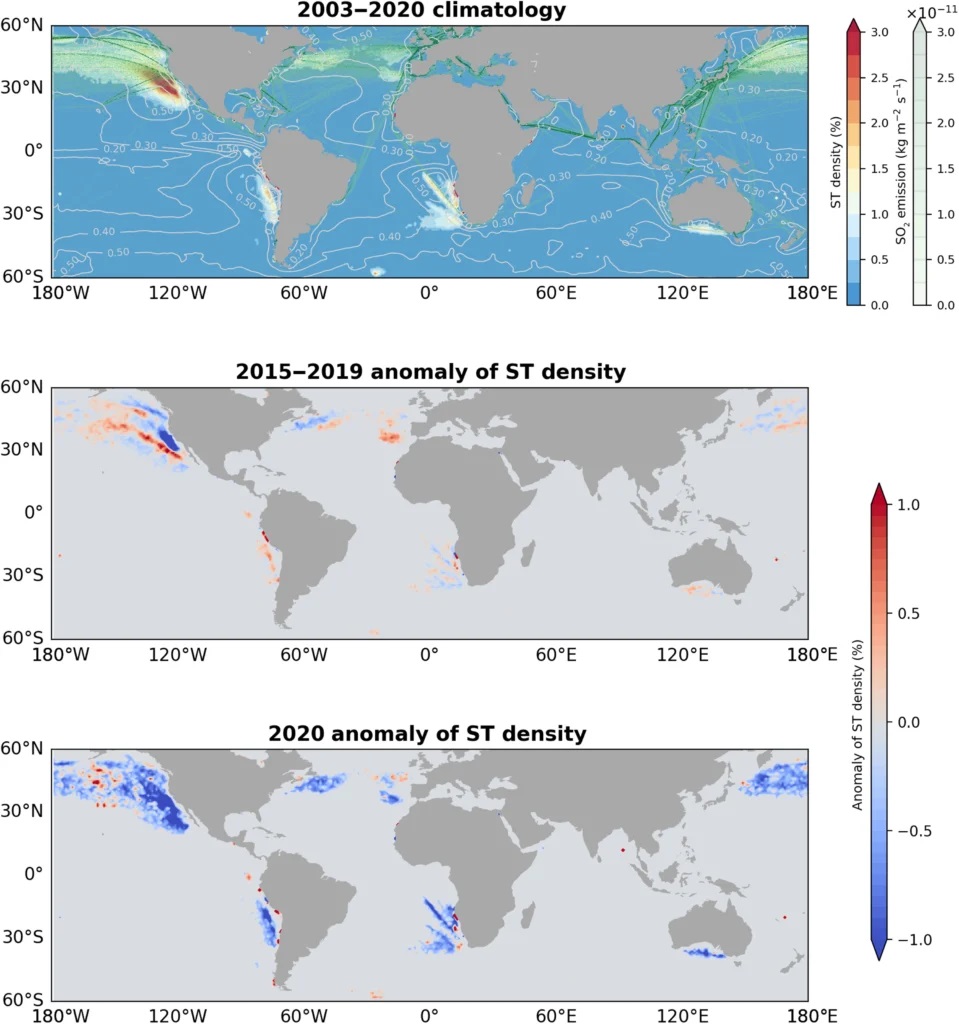
Construction For New Tweed Valley Hospital Reaches Highest Point
 The new seven-storey $723.3 million Tweed Valley Hospital development has reached a major milestone, hitting its highest point of construction. Deputy Premier and Minister for Regional NSW Paul Toole said the new hospital campus is the state’s largest regional hospital project.
The new seven-storey $723.3 million Tweed Valley Hospital development has reached a major milestone, hitting its highest point of construction. Deputy Premier and Minister for Regional NSW Paul Toole said the new hospital campus is the state’s largest regional hospital project. - More than 400 overnight and day only beds to address future demand for health services
- Expanded emergency department with 42 treatment spaces
- Expanded outpatient services with more clinics
- 12 operating theatres, an increase of five from the existing Tweed Hospital
- New interventional cardiology service
- New radiotherapy service as part of integrated cancer care, including a PET-CT suite
- Outdoor green spaces
- Campus roads and car park.
Free Training For NSW Asylum Seekers And Refugees
Consumers Warned To Be Vigilant As Imposter Bond Investment Scams Rise
- check ASIC’s Offer Notice Board to see if a prospectus relates to a recent offer registered;
- check ASIC’s register of Australian financial services licensees to make sure any party promoting or issuing the financial product is licensed or is authorised by a licensee;
- check ASIC’s Moneysmart list companies you should not deal with.
Explorers just uncovered Australia’s deepest cave. A hydrogeologist explains how they form
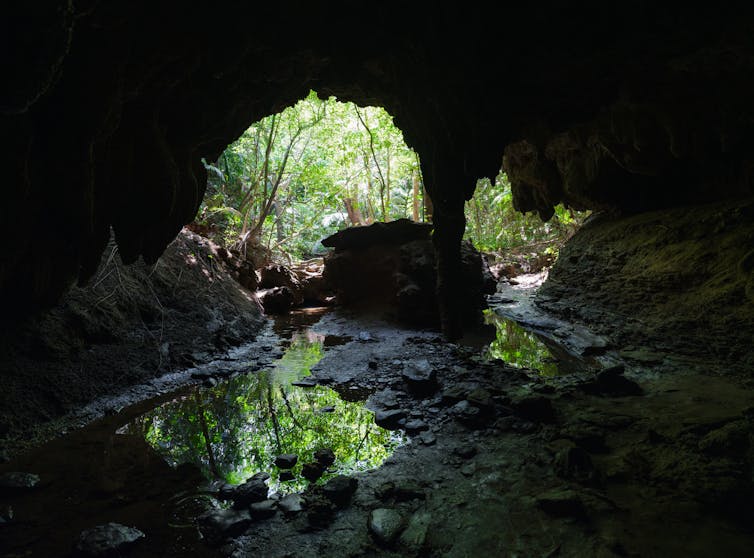
Cave explorers have traversed what’s now the deepest known cave in Australia. On Saturday a group of explorers discovered a 401-metre-deep cave, which they named Delta Variant, in Tasmania’s Niggly-Growling Swallet cave system within the Junee–Florentine karst area. Its depth just beat out its predecessor, the Niggly Cave, by about four metres.
With a descent that lasted 14 hours and took many months to prepare for, Delta Variant is causing a stir among explorer communities.
But it holds a different kind of fascination for researchers such as myself, who study the interaction between groundwater and rocks (including in the context of caves). This helps us learn about natural processes and how Earth’s climate has changed over millions of years.
Exciting as Delta Variant is in an Australian context, it is arguably just an appetiser in the wider world of caves; the deepest known cave, located in Georgia, goes more than 2.2 kilometres into the earth.
So how exactly do these massive geologic structures form, right under our feet?
How Do Caves Form?
Put simply, caves form when flowing water slowly dissolves rock over a long time. Specifically, they form within certain geological formations called “karst” – which includes structures made of limestone, marble and dolomite.
Karst is made of tiny fossilised microorganisms, shell fragments and other debris that accumulated over millions of years. Long after they perish, small marine creatures leave behind their “calcareous” shells made of calcium carbonate. Corals are also made of this material, as are other types of fauna with skeletons.
This calcareous sediment builds up into geological structures that are relatively soft. As water trickles down through crevices in the rock, it continuously dissolves the rock to slowly form a cave system.
Unlike much harder igneous rocks (such as granite), calcareous rocks dissolve on contact with water that is naturally acidic. When rain falls from the sky, it picks up carbon dioxide from the atmosphere and soils along the way, which makes it acidic. The more acidic the water, the faster it will erode karst material.
So, as you can imagine, cave formation can become quite complex: the specific composition of the karst, the acidity of the water, the level of drainage and the overall geological setting are all factors that determine what kind of cave will form.
In geology there’s a lot of spatial guesswork. Being able to see how deep a cave formation goes is a bit like getting into the deepest layers of a cake, where you may not find the same thing in all directions.
Stalagmites And Stalactites
From a research perspective, caves are incredibly valuable because they contain cave deposits (or “speleothems”) such as stalagmites and stalactites. These are sometimes spiky things that point up from cave floors, or droop from the ceilings, or form beautiful flowstones.
Cave deposits form as a result of water passing through the cave. Like trees, these contain growth rings (or layers) that can be analysed. They can also include other chemical signatures the water contained, which can reveal processes that occurred at the time of formation.
While they may not seem like much, we can use these deposits to unravel past secrets about Earth’s climate. And since they’re a feature of the interaction between rock and water during cave formation, we can basically expect to find them in most caves.

How Deep Can We Go?
Descending deep into a cave system is no small feat. You can’t use your mobile (since there’s no reception), it’s incredibly dark and you’re usually relying on a guide line to find the way back out. There could be many dead ends for explorers, so effectively mapping the space requires time and great spatial exploration skills.
While cave systems are usually stable (shallow caves can in theory collapse and form sinkholes, but this is very rare) – there’s always risk. The unexpected geometry of caves means you could find yourself making tricky manoeuvres, twisting and swaying in all kinds of uncomfortable manner as you abseil into darkness.
Although the air pressure doesn’t change to a dangerous extent as you descend, other gases such as methane, ammonia and hydrogen sulfide can sometimes pool and lead to suffocation risk.
Despite all of the above, cave exploration is something people continue to do, and it brings great benefit for researchers in various sub-fields of geology.
And though we’ve come a long way, there are always nooks and crannies we can’t get inside – after all, humans aren’t tiny. I’m sure there are small spaces, too snug for us to explore, that open into much longer or bigger systems than we’ve ever discovered.![]()
Gabriel C Rau, Lecturer in Hydrogeology, School of Environmental and Life Sciences, University of Newcastle
This article is republished from The Conversation under a Creative Commons license. Read the original article.
Women Less Likely To Receive Pre-Hospital Stroke Care Than Men
Engineers Develop New Integration Route For Tiny Transistors


The Lining Of Children's Noses May Provide Protection From SARS-CoV-2 Infection
An Effective New Treatment For Chronic Back Pain Targets The Nervous System
Disclaimer: These articles are not intended to provide medical advice, diagnosis or treatment. Views expressed here do not necessarily reflect those of Pittwater Online News or its staff.